2 Volume II, 1981-1989
Vladimir Marinich
TABLE OF CONTENTS
Preface
Changing of the Guard
Some Loose Ends
A New Beginning
Settling in Can Be Unsettling
In Search of Excellence
1986: What a Year!
1987: Resurgence
’88 Was Great!
The End of the Decade
Appendix A HCC Enrollment Trends 1981-1990
Appendix B HCC Fall Enrollment by Racial Groups
Appendix C Nursing Building 1981
Appendix D Nursing Building Restructured
Appendix E Chronology of High Schools in Howard County
Appendix F Howard County Executives
Appendix G 1987 Plan for Cultural Arts Center
Endnotes
PREFACE
The entire staff of HCC is an active group that is generally involved in the life of the college and much of the creativity, innovation, and projects for improvement come from individuals who have ideas on how things could even be better; however, the overall direction of where the college sees itself going and the tone comes from the Board of Trustees and the President. Consequently, this volume addresses the first half of the tenure of HCC’s second president, Dr. Dwight Burrill, and how things evolved from his arrival in the summer of 1981 to 1989, but it is also important for me to point out, as I did in the first volume, that this is not a history of the college within the context of the community college movement; rather it is the story of HCC, its people, its culture, and its challenges and achievements. Thus, there is very little, probably close to none, about the college’s economic, legal, and political relationship to the State of Maryland, but certainly a lot about HCC’s relationship and interactions with the community within which the college operates. The reader may find that some of the events and incidents that are mentioned in this volume seem small, but I assert that at the time they seemed big to some and, even if that is not entirely the case, they shed light on the activities and college culture of the time.
As in the first volume the sources for these next pages come from newspaper articles, letters between HCC and outside groups, internal memos and documents, Board minutes, and interviews. The latter provide not only information but also perspectives that give some sense of the atmosphere at the college at time. These interviews often contributed facts and details that did not appear in documents, and that were often useful and interesting, but as I wrote in the first volume, “While this kind of information was interesting, I could only use it if there was a clear pattern in its understanding by more than just one or two people.” In some of the interviews the respondents stated that they simply did not remember a particular event or circumstances surrounding it. In such cases I had to rely on documents. In a few cases I got no response from my request for an interview. That was disappointing, but I guess that could be expected if for no other reason than that some percentage of requests for interviews could go unanswered. There might also have been some sensitivity about being interviewed about the recent past as one would have participated in it. As a former history colleague of mine observed it is sometimes easier to write about things that happened in a more distant past since all the actors are no longer around. As he put it, “the sensitive part of writing contemporary history is that some of the corpses are still walking around.”
My efforts have been made easier and so much more fulfilling with the continued support of the college president, Dr. Kathleen Hetherington, Academic Vice President Ronald Roberson, and the President’s staff. On a day to day basis the library’s cooperation in my accessing the archival information was so helpful, and my interaction with Quentin Kardos the Coordinator of AV Services was very useful, especially in going over photographs and being able to recall events, dates, and people. The interviews were all saved on CD’s but they needed to be transcribed. Ms. Pamela Brown was employed for this purpose and her ability, accuracy, and commitment to this effort are greatly appreciated. Professor David Hinton worked his magic in providing the three-dimensional schematics of the buildings that are found in the Appendices. The Planning, Research and Organizational Development (PROD) office provided me with much data on enrollment, student demographics, and trends, and they did it with such good will and support..
My colleague, Dawn Malmberg, put together the organization charts from my hand drawn ones and gave them such a good, clear, professional appearance. Thanks, Dawn for all your help!
My colleague at HCC, and my wife, Barbara Livieratos, read this material, as she did with the previous volume and gave me suggestions and ideas for accuracy of expression, greater clarity, editing, and gave me encouragement and constructive criticism, and a lot of patience. Much thanks to you, Barbara.
CHANGING THE GUARD
Alfred J. Smith, Jr. was the first, and therefore the founding, president of Howard Community College. By the spring of 1981 he had served for 12 years, and when he began as president in mid-1969 there was no college other than on paper. The physical facility began to be constructed a little later in 1969 and was to be finished and ready by early September of 1970; however, work was not completed until early October and so, classes began on Monday, October 12, 1970.
Ten years later at the October 22, 1980 meeting of the Board of Trustees of Howard Community College, the Chairman of the Board, Dr. John Hamilton informed his fellow Board members that Smith had tendered his resignation effective July 1, 1981.
Smith’s imminent departure was recognized in the October 9, 1980 issue of the local newspaper, The Columbia Flier, with a seven page special feature entitled “The School That Smith Built.”1 Within those seven pages were positive reflections of Smith’s performance as president, laudatory comments by employees, members of the Board of Trustees, and no small number of criticisms from various individuals, including a member of the Howard County Council.2 In the end, however, the Flier, a newspaper that had generally been critical of Smith, stated in its editorial that Smith would “be departing much more in glory than in defeat.”3
A search committee was formed in November, 1980, for a nationwide search to find a new president for the college. The committee was composed of three trustees, two administrators, two full-time faculty, and two students. The chair of the search committee was Dr. Hamilton, who was the Chairman of the Board of Trustees. The Board took the position that since they were not employed by the college they could also represent the community.4
1981 was a remarkable year in many respects. Change would be coming to the college and it was also a time of major changes on the world and national scene, and moments that shook the world. Ronald Reagan was inaugurated as the fortieth President of the United States and less than three months later he was shot and seriously wounded by a would-be assassin. In March, Pope John Paul II was shot and seriously wounded by a would-be assassin. Later in the year Egypt’s president, Anwar Sadat was assassinated. The U.N High Commission for Refugees won the Nobel Peace Prize, and the scholar Will Durant passed away.
Closer to home IBM introduced the PC in August and captured a major share of the market. The U.S. Department of Agriculture announced that ketchup could be counted as a vegetable in school lunches. President Reagan appointed Sandra Day O’Connor to the U. S. Supreme Court; the first female jurist appointed to the high court. The Oakland Raiders defeated the Philadelphia Eagles 27-10 in Superbowl XV at the New Orleans Superdome. The blockbuster movie of the year was “Raiders of the Lost Ark.” Walter Cronkite, CBS Anchorman, retired. And in Atlanta, the Center for Disease Control was homing in on a number of rare infectious occurrences that would, within a year, be identified as Acquired Immune Deficiency Syndrome (AIDS). In the area of popular culture, the reggae musician, Bob Marley, and the rock musician Bill Haley, both died, as did the boxing world’s famous Joe Louis. And for those who are really interested in things that are less than haute culture, both Paris Hilton and Britney Spears were born in 1981. Even closer to home, the Howard County Central Library opened with a collection of over 1.2 million books.5
The spring 1981 semester was Smith’s last as president. Student enrollment had continued to grow. There were 3,129 credit students; 650 full-time and 2,279 part-time credit students. There were still almost twice the number of females as males; 2,029 females to 1,100 males, and the females again, as in prior semesters, were older with average ages of 31.5 for females to 28.3 for males. The median ages show females at 30 and males at 24.7. HCC students were not “kids.”
In May, 1981, Dr, Dwight A. Burrill was appointed the second president of Howard Community College; the appointment to be effective July 1, 1981. Smith had retired the day before. He had been president of Howard Community College for twelve years.
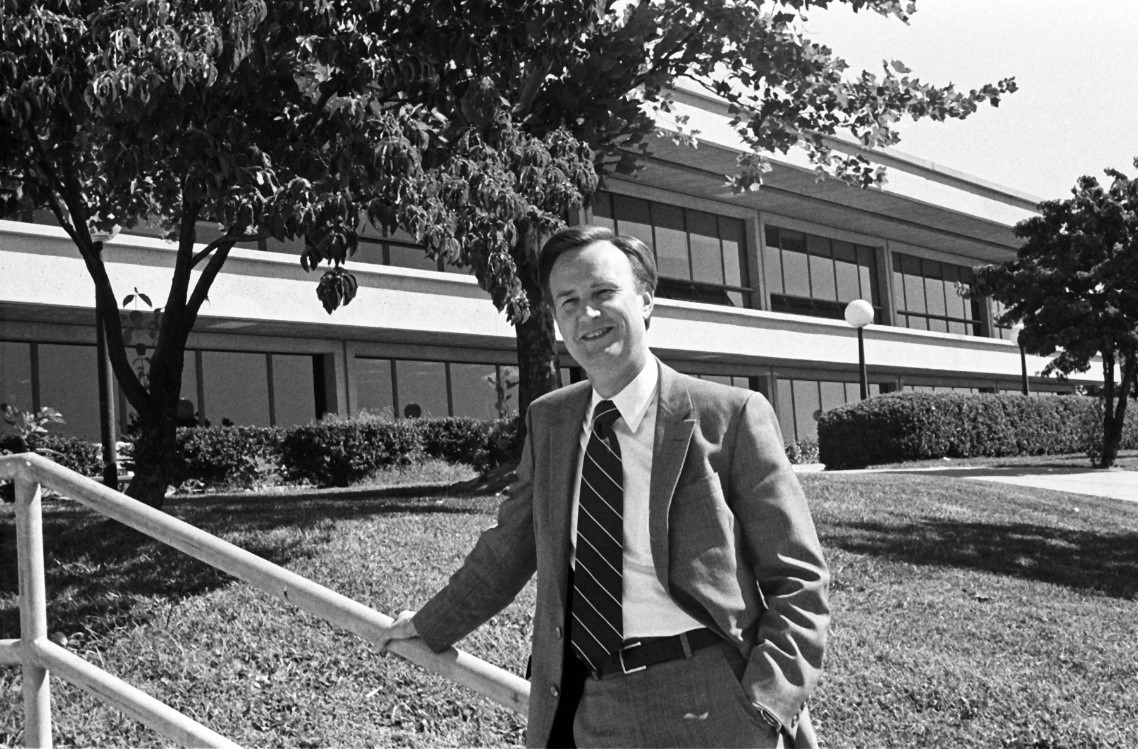
When Burrill began his tenure as the second president, here is what he encountered in terms of the overall environment that greeted him. The physical facility of the college consisted of an L- shaped series of three connected buildings and a gymnasium building. The connected buildings were the Library Building on the east side, that some employees continued to call the Main Building, the Nursing Building was next, followed by the Administration Building and the Smith Theatre and, as can be seen, the buildings and their main entrances looked out not at a quad but at a staff parking lot.
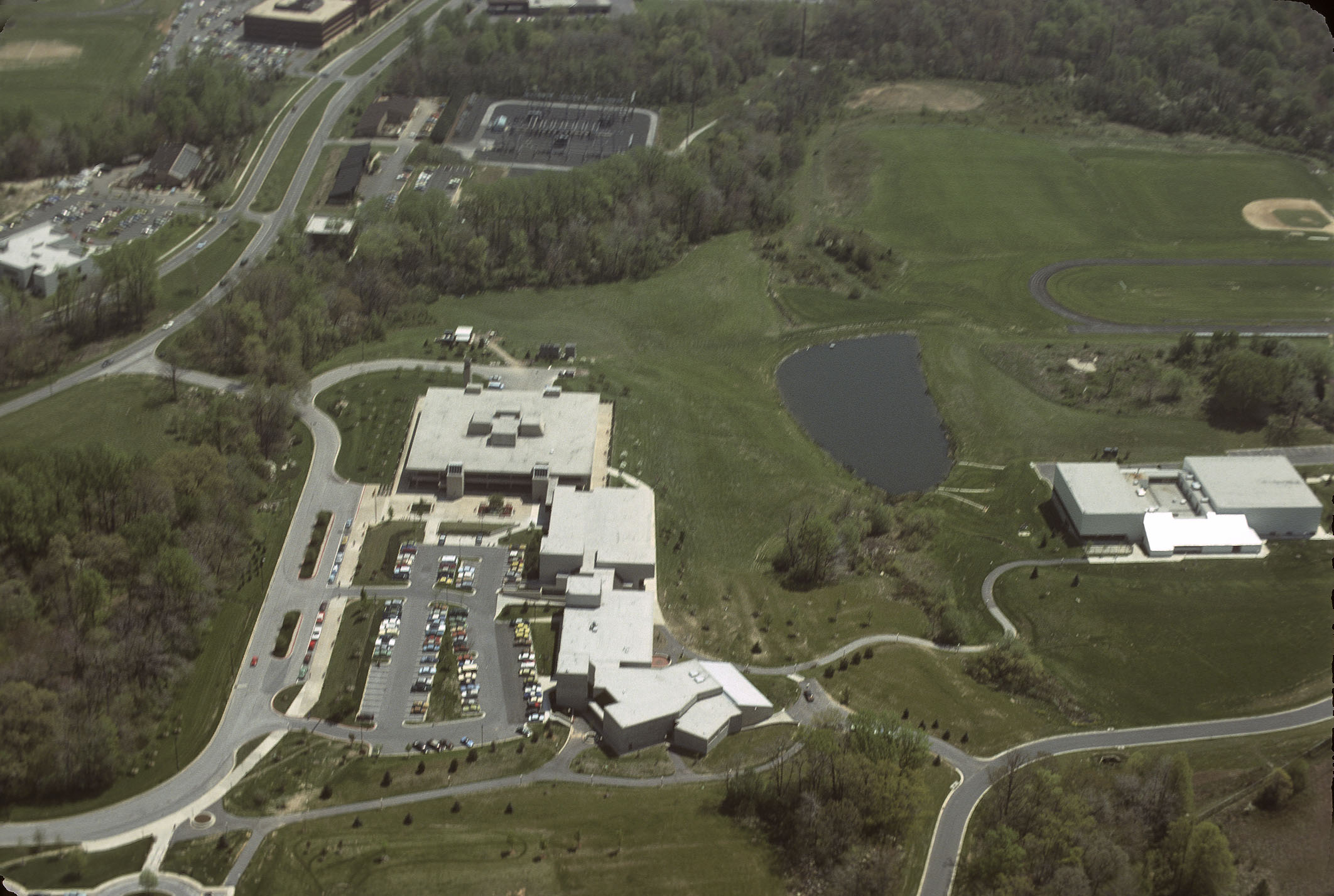
There were 44 full-time faculty listed in the 1981-1982 college catalog. Division chairs were listed in both the Faculty and Administration sections of the catalog and Counselors were listed in the Faculty section. Marinich recalls that there were between 100 –120 adjunct faculty per semester at that time across all disciplines. The Continuing Education brochure for the fall 1981 season was 34 pages. There were courses in archaeology, languages (French, German, Italian, and Spanish), a number of real estate courses, nursing courses, various business courses, and two courses, one entitled “A First Look at Computers,” and the other was listed under “new courses.” It was called “Computer Careers.” Things would change.
At the time of Burrill’s arrival the members of the Board of Trustees were:
Dr. John M. Hamilton, M.D., Chair
Mr. Patrick F. O’Connor, Vice-Chair
Dr. John W. Sundstrom
Dr. Charles B. Leonard, Jr.
Mrs. Leola M. Dorsey
Mrs. Celonia B. Walden
Mr. Seymour Barondes
Almost all of these individuals had been on the Board for several years and their professional backgrounds varied; there were educators like Dr. Leonard, Dr. Sundstrom, and Mrs. Walden, community coordinators like Mrs. Dorsey, Dr. Hamilton who was a State Hospital Superintendent, and Barondes and O’Connor were with the federal government. None of these individuals came from the business community.
When Burrill arrived in the summer of ’81 the college had already had four deans of instruction and five heads of student services.
The senior administrative staff that was there at Smith’s retirement continued under Burrill and the group subsequently became known as “the President’s Cabinet.” The individuals who composed this cabinet were:
Dr. Roland (Chip) Chapdelaine was the Dean of Instruction. He had started at the college in 1972 as an instructor in biology, and had risen fairly quickly through the faculty ranks becoming a division chair and by 1978 he was appointed by the previous president, Dr. Alfred J. Smith, Jr., to be the Acting Dean of Instruction. About a year later his position was made permanent. While he was the youngest of the president’s staff he was at the college longer than the others, but not in the senior administrative capacity; and what he may have lacked in breadth of experience he made up for by the depth of his interest in pedagogical practice (e.g., he had taught and gone through the rigorous “Systems Approach”), and he certainly was acquainted with many of the faculty at HCC. He would be dean until his resignation in 1986.
Benay Leff had come to HCC in 1977 as Director of Community Information. Her job was to manage all the various areas of public and community relations. This included publications, advertising, coordinating special events, general liaison with the community and, of course, to be the college’s spokesperson. Prior to HCC Leff had a number of years experience in the field of public and community relations that went back to the mid 1960’s at such organizations as the Job Corps Center for Women and the Psychiatric Institute in Washington, D.C.
Fred Nunley was the Dean of Administrative Services. He had joined the college in 1977. Prior to joining HCC Nunley had been at Dundalk Community College since 1972 as the Business Manager; this was the title that DCC used for the senior administrative and finance position at the college. His experience at Dundalk is worth commenting on. He was part of a team of administrators who were involved in the earliest days of the college, since Dundalk Community College only came into existence in 1971.
Walter Bumphus was the Dean of Student Services. He was hired in that capacity in 1978 by then HCC president, Dr. Alfred J. Smith, Jr. just as had all the other senior administrators. So, he already had three years in his job when Burrill arrived. Prior to that Bumphus had worked at East Arkansas Community College since 1974 as the Dean of Student Services there. With a Master’s degree, Bumphus continued to work on his doctorate in educational administration through the University of Texas at Austin in the Community College Leadership Program coordinated by Dr. John Roueche.
Lawrence Nespoli was the Director of Research, Planning and Funding. He was hired to replace Charlene Wenckowski (later Charlene Nunley) who had left HCC to take a more responsible position at Montgomery College.
At the 1980 census, the most recent one at the time, Howard County’s population was 118,572, and Columbia made up 54,100 of the total.6 Both Columbia and the county had been growing, so the prospects for the college looked good.
There were eight public high schools in Howard County when Burrill took over as president of HCC: Howard, Glenelg, Mt. Hebron, Atholton, Wilde Lake, Oakland Mills, Hammond, and Centennial. The ninth high school, River Hill, would not be built until 1994 (See Appendix E for a complete listing of high schools in Howard County).
When Burrill arrived at the college in July, 1981, HCC’s Summer Session of classes was half over, and the fall semester’s schedule had already been out to the community for several months and many students had already preregistered; so, the new president’s ability to affect enrollments was understandably highly limited. The fall, 1981 enrollments were up from the previous year. In fall, 1980, there was a total of 3,042 credit students, and now, a year later, there were 3,330. Of these, there were 776 full-time students and 2,554 part-time. There were still almost twice as many female students as male students. There were 2,191 females to 1,139 males; and the females were older. The average age of females was 30.7 to 26.9 for males. The average for all students was 29.4. Did we already say that HCC students were not “kids?”
Black students, with 335 enrolled, were 10% of the total credit enrollments, up from the previous year when they were 8.9% of the total credit enrollments. Asian students with 76 enrolled constituted 2%; the same percentage as the previous year. Hispanic students were less than 1%.7
Of the 44 full-time faculty at HCC in 1981 14 of those who started in 1970 and 1971 were still at the college. This is not a minor statistic because the 1970’s was a period of incredible growth of the community college movement and experienced faculty were in demand. A number of HCC’s faculty had explored moving on and some were even approached and encouraged to apply to other schools. The fact that so many stayed suggests that HCC was a good place to be.
There were a lot more good things happening at the college. Dr. Jerrold Casway, Professor of History had a paleographic study of “The Unpublished Letters of Owen Roe O’Neil” published in Analecta Hibernica. It was quite a coup for Casway whose work appeared with other scholars of international repute in this prestigious journal. Bruce Reid, Professor of Electronics, was awarded a Fulbright Scholarship for a year of teaching and studying at two universities in Denmark. The college hired a full-time Coordinator of Cooperative Education, having received a $70,000 COOP grant. An Engineering A.A. program was introduced in August ’81. The prior year there had been only one engineering course at the college. HCC’s soccer team, known as the “Express” took first place in the Cecil Small College Tournament, and in October the college’s theatre was officially dedicated and named after the first president. This was the Smith Theatre.
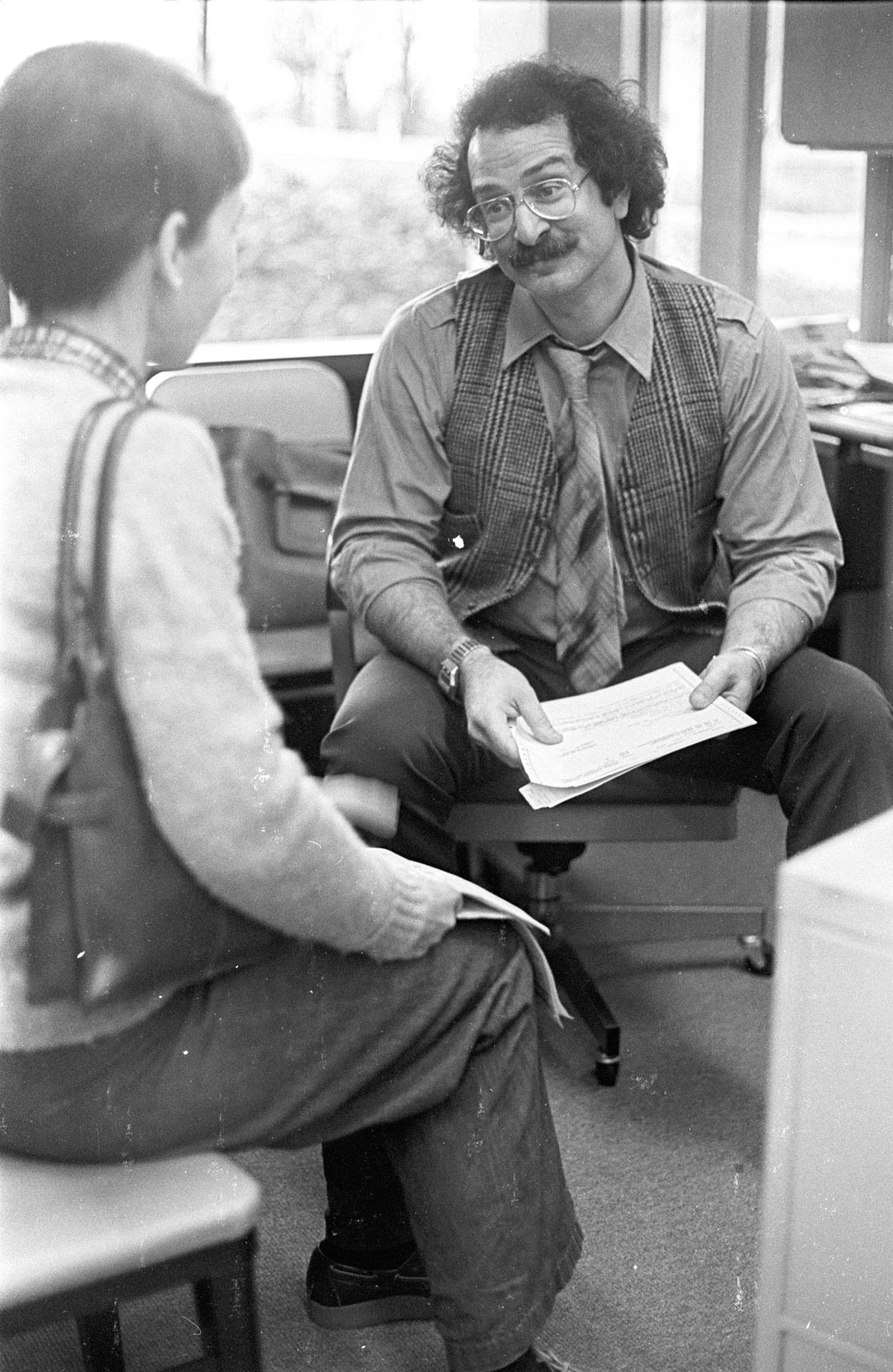
Other no less important matters were addressed by the Board of Trustees. Since its opening in 1970 the college had a policy that professional staff had to reside in Howard County; however, because some exceptions had been allowed the policy was not really enforceable. In November ’81 the Board abolished the policy. At that same meeting the Nursing Lounge was named after the first Director of Nursing, Bernadene Hallinan, and what became known as the upper- one- third policy was approved by the Board. This policy was a subset of a more general salary schedule policy for faculty, administration, and non-professional personnel. The wording for the faculty section was:
The average teaching faculty and counselor salary at Howard Community College shall be in the upper third of the average teaching faculty and counselor salaries of Maryland Community colleges.8
The following month the Remuneration Policy was revised. Burrill’s view was that the upper third policy “was applicable to a specific segment of the college staff. Dr. Burrill recommended a general policy which would apply to all staff.” The new policy, approved by the Board, read:
Howard Community College will maintain a remuneration program consistent with state and local funding, applicable laws and regulations that will keep the College competitive with other area employers; will aid in attracting and retaining competent employees; will provide for internal equity; and will provide incentive and rewards for good performance.9
SOME LOOSE ENDS
As in any change of administration, Burrill had work to do. The Board tasked Burrill to become very active in the community. There were three basic reasons for this; one was that the college had reached a certain level of maturity; it was, after all, twelve years old and those first years were devoted to establishing HCC’s credibility as a sound educational institution. Much of the work to achieve this was in building a solid pedagogical base. In focusing on pedagogical matters the college succeeded very well, much to Smith’s credit 10, but now it was also time for the president and the college to reach out to the community. A second reason was that the college was still not getting the recognition and attention that it deserved. In December, 1982 an advertising supplement to the Columbia Flier was published under the title “college Catalog: Directory of Educational Opportunities.” This was a 16-page supplement that had articles about college costs, financial aid, some human interest stories, ads, and a listing of colleges in the area. There was an article on honors programs. It was half a page consisting of about twenty-two paragraphs. Howard Community College was mentioned in four paragraphs and Catonsville Community College in eighteen !11
A third reason for the outreach was that there were some fences to be mended, particularly with some in the local news media and the County Council, at least with one member of the County Council.
The background for some of the occasional conflicts between the county government and the college goes back to the summer of 1976 when the Howard County Council passed a financial disclosure law that required “various officials and candidates for local office to make an annual report of their financial interests. HCC’s Board of Trustees took the position that the county did not have the authority to require such disclosure from the Board and that the Board was exempt from this law by virtue of the fact that the Board was “composed of local citizens appointed by the governor, and they were not paid for their work.” A lawsuit followed with the Board requesting an exemption from this law. The judge granted it and the county dropped the matter. But the papers picked up on this and subsequently the local media learned that the president had an unrestricted allowance of $11,000.
Newspaper articles began to appear more frequently on various financial and personnel issues coming out of the college. The Board’s and Smith’s aggressive defense of their positions aggravated the situation and finally the pressure of all this brought the county executive into the matter with a request that the college agree to an audit of its finances. The college agreed to a limited audit, and the matter ended with the Howard County Times of February 23, 1977 carrying the headline, “College Cleared of Misconduct.” One of the side effects of all this was a recommendation by one of the County Council members that the Council should have a role in the selection of members of the college’s Board of Trustees.
Over the next three years there were more incidents that generated unfavorable press coverage and continued tension with the county government (this period is described in some detail in the first volume of HCC’s history for those who are interested). So, back to the fence mending.
Of the few other things that Burrill had to contend with was the renewal of the idea that had popped up in the late “70’s when the relationship between the college and the County was strained, that the County Executive and County Council should have a role in recommending members of HCC’s Board of Trustees. Delegate Ann Baker had filed a bill to that effect. It did not get anywhere, but it was a distraction.12
A more serious situation was how the county government dealt with the college budget.
When the college would submit its annual budget to the county, the County Executive could modify it; that is, increase or decrease it. In any event the budget went next to the County Council. The County Executive had decreased the college’s proposed 1982 budget and the Council took the position that it was not authorized to restore money to the college. The matter went to the Howard County Circuit Court and the court “upheld the County Council’s refusal last year to increase the community college’s 1982 budget above the amount recommended to them by the county executive.”13
In 1982 the Howard County government was administered by J. Hugh Nichols as County Executive, and the County Council membership was composed of:
Elizabeth Bobo, Chair of the Council
Ruth U. Keeton, Vice Chair
Lloyd G. Knowles
Virginia M. Thomas
Thomas Yeager
In spite of the several distractions the college’s relationship with the county government improved considerably. As early as the spring of 1982 the Chairperson of the County Council, Elizabeth Bobo wrote an article in a local paper outlining the relationship of the county to the college. She cited the favorable budget hearing with the college, mentioned the positive testimonies that were presented, noted the creation of “a private foundation, spearheaded by Celonia Walden, a member of the Board of Trustees, to raise a scholarship fund to aid those students who cannot afford tuition payments,” addressed the college’s programs that served business and industries and, finally concluded with the following:
It seems clear that the county needs Howard Community College
and that the College needs the support of the people and government of our
county. Fortunately, the Council, the Board of Trustees, the President of HCC
and the County Executive all have a good working relationship on the HCC
Budget. We expect that we will all continue to work together to insure the
continuing success of our Community College.14
The college’s interest and concern for environmental responsibility goes back to the early ‘80’s. In September, 1981, Burrill proposed a four-day work week for summer 1982 as “a pilot project to save on energy costs.” The college would shut down for Friday, Saturday, and Sunday. 15 The program was put into operation that next summer; however, it did not continue for more than a few years. Burrill’s recollection of why this did not continue was not because there were complaints about college employees not working on Fridays, but because a number of community groups wanted use of the facilities. So, the college went back to being open on weekends, but employees were given the option, during summers, to work a four day/ten hours a day week, but not all employees could take the same day off. And that worked for several years.
A NEW BEGINNING
Dr. Dwight Burrill had come from the presidency of the West Campus of Cuyahoga Community College in Ohio. He had been looking around for a presidency of a community college, not just of a campus of one and his search became more active when Cuyahoga began a reorganization which would have put Burrill at the central campus in the city. His interest in HCC was on many levels. Burrill was looking for a small to mid-size suburban community college and visiting Columbia and Howard County impressed him quite favorably.
But there were two more reasons, one administrative and the other pedagogical. One of the offers that Burrill had gotten, as he tells it, from the other college’s board of trustees had to be approved by the state Board of Trustees. This told him that the position of the local board and that of the president would be quite limited in that ultimately the decision maker would be the state. At HCC the decision to hire was the College Board of Trustees’. So, the president at HCC would have considerably more decision making authority. This was a major factor in Burrill’s decision to accept the offer to come to HCC. The other reason was that Burrill was aware of the college’s rigorous emphasis on student learning as it was implemented in the “systems approach.” Because he had previous experience with programmed instruction and the early uses of computer assisted instruction, this attracted Burrill. Burrill also saw that the college could play a major role in both the business and cultural life of the growing community. He was certainly right about HCC becoming more involved with the business community.
In January 1982 the Business and Industry Office of the Continuing Education Division moved beyond the immediate college surroundings in terms of their course offerings. They really began to grow. In addition to in-house courses that were offered to the business community courses were now also marketed to be run at local businesses. By April 1982 there were 12 local business locations with 25 courses.16
In the credit area the spring ’82 semester had an enrollment of 3,316 students, a slight decrease from the prior semester, but not a problem since spring semesters generally had slight declines over the prior fall semesters. As in past semesters there were almost twice as many female students as male students, 2,134 vs. 1,181, and the average ages were not the same. The average age of females to males was 30 to 24. “Blacks “accounted for 9% of the total with Asians at a little over 1%, and Hispanic and “American Indian” a little less than 1%. The category of Other/Unknown accounted for 21% of the credit students.17
HCC’s full-time faculty comprised 25% of the total credit teaching faculty at the college.18 The question of what an acceptable and working mix of full-time to part-time faculty began to come to the fore and would be an issue of discussion and consideration as the college continued to grow.
As always the college was active in a number of areas. Theatrical and cultural programs flourished in the spring. In February the college put on “The Glass Menagerie” and in March the poet Robert Bly was at the college and HCC’s Prof. Lee Hartman coordinated the event. On March 21 the noted jazz guitarist, Charlie Byrd performed at HCC, and on April 23 pop jazz singer Ethel Ennis performed in the Smith Theatre, followed by the National Shakespeare Company presentation of “The Taming of the Shrew” on April 24.
Academic excellence was celebrated in April with the induction of 60 students into the national honor society Phi Theta Kappa. The ceremony was conducted on April 16 in the Smith Theatre. At that time students were eligible to be invited to join HCC’s chapter of Phi Theta Kappa if they had one semester under their belt, were full-time students, and had a 3.25 GPA.19 Graduation continued to be held on Sundays and this one was on Sunday, June 6. There were 267 A.A. degrees granted and 255 Certificates of Proficiency. Some students earned more than one diploma.
The college’s expansion into both credit areas and into cultural and community involvement can already be seen, but a few more examples are appropriate. In the Fall the Joffrey Ballet Company performed in the Smith Theatre, and a major decision was made at HCC to move music beyond just the offering of basic courses to developing a program, and to get this started the college employed its first full-time music faculty member, Arthur Monroe.
SETTLING IN CAN BE UNSETTLING
Upon Burrill’s arrival at the college in July of 1981, with everything that HCC had to offer, the new president felt after being at HCC for a fairly short period of time ”that there seemed to be a real palpable sense of fear that penetrated the institution. People really seemed to be genuinely afraid for their positions.”20 He attributed this climate to the turbulent events of 1977-1978, and that it would take time for the atmosphere to change.
The Fall 1982 semester saw an increase in credit student enrollment again even though the country was getting out from under a recession that had hit the nation around July of 1981 and tuition had gone up from $24 to $26 per credit21, and again the ratio of female to male students was almost two to one with 2,407 females and 1,243 males. The average age of the female students was 28.5 and for males it was 22.8. The average age of all full-time students was a little over 19, but for part-time students the average age of females was 31.3 vs. 26.1 for males.
The racial/ethnic composition of the Fall ’82 enrollments showed “Blacks” comprising 11% of the total credit student population with Asians at 2% and Hispanics and American Indians adding up to about another 2%. Thus, in combination, minorities accounted for 15% of the total and “Other/Unknown” for a little over 12%. The reader might be interested in knowing that as HCC moved out of the twentieth century and into the twenty first things were going to change.
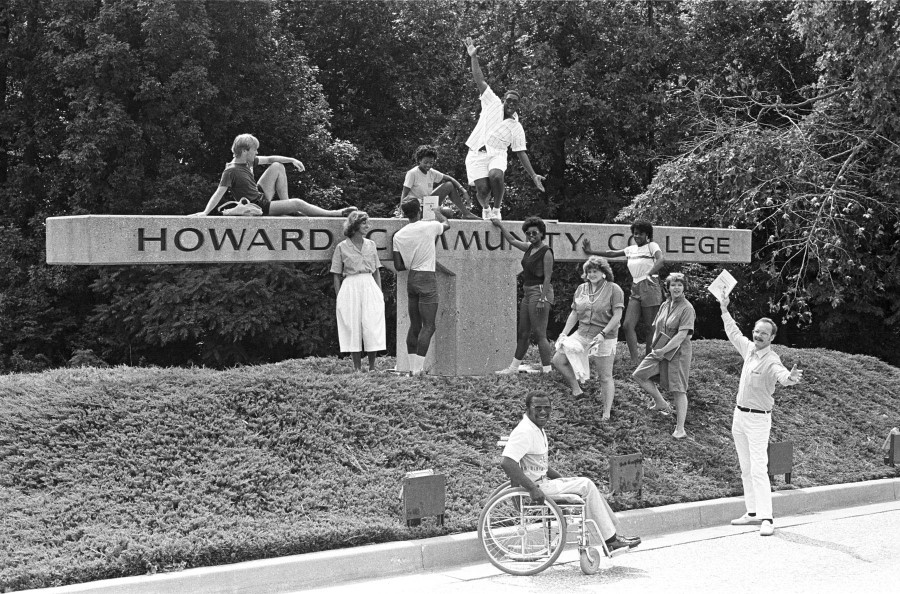
The college expanded its course offerings to include more telecourses, and this was done in association with Maryland Public Broadcasting. HCC’s Fall telecourses included Introduction to Business, Data Processing, Government, American History, Psychology, and Philosophy. This was the college’s major move into what would later be called distance education. Students who signed up for these courses would generally be required to attend four to five sessions of about two hours each, usually on a Friday evening or Saturday morning. The first session at the beginning of the semester was an orientation session and the subsequent ones were in the middle of the semester and at the end. The standard routine was a two hour review followed the next weekend with an examination. Other than these sessions the students watched the educational programs, had a textbook, and a study guide that led them through the course. Thus, there was a strong independent study component to this program.
The college was growing. But enrollments were edging up faster than the college’s facilities could handle. Classrooms, as always, were at a premium. Burrill saw this in his first year and recognized the need for more space. His decision was to re-allocate space in the Nursing Building.* This was, arguably, necessary; however, it did create some controversy and the local press carried a story about this that was entitled “$1.2 Million Grant At Stake.”22 The original nursing grant stipulated that 90% of the Nursing Building space had to be used for nursing, with no more than 10% for other departments and that eventually the entire building would be used for nursing.
One of the procedures that had to be followed was that the Nursing Program had to submit annual Space Utilization and Enrollment reports to the Health and Human Services Public Health Service. The December 17, 1981 report showed that the Nursing Building was used 90% for Nursing.23 By the summer of 1982 remodeling was done with several rooms that were assigned to the nursing program redesigned and reassigned to other functions, which seemed to have reduced nursing allocations to 80% of the building’s use. The spaces that were lost by the Nursing Program were a faculty lounge, storage room, conference room, and the Nursing Director’s office was reduced in its square footage. In any event, the Public Health Service of the U.S. Department of Health and Human Services contacted the college about this matter. Since the official annual reports were made each December, it is not clear how the reallocation of spaces in the Nursing Building came to the attention of the Public Health Service. In any event the college received a letter from the Public Health Service requesting a meeting with the president, two members of the Board of Trustees, the Nursing Director, several nursing faculty, and the Dean of Instruction. PHS also notified Representative Beverly Byron of the requested meeting. The PHS letter stated:
We are interested in reviewing the assurances given by Howard
Community College as a condition for receiving the construction
grant award; the alterations the College proposes to make the nursing
education building; and the relationship of your plans to the grant
assurances.24
This matter would go on for four years with the college and PHS exchanging letters, having meetings, and the college providing space utilization data and reports. The situation seemed to have gotten a bit testy since an official of HHS is reported to have said about Burrill, “We’ll rip off his epaulets and tear off his stars.”25 In recollecting this entire period Burrill remembered this comment with some amusement, saying that he never knew that his business suits had epaulets or stars on them.26 Part of the communication that went on between the college and PHS had to do with the college including some of the Continuing Education Division’s offerings of nursing refresher courses, Nursing State Board Exam reviews, etc., as proof that the college was allocating the proper amount of space to nursing. The matter would not be resolved until the end of 1986.
1982 saw the college’s continued involvement with the community in several areas; HCC hosted an indoor soccer tournament with club teams of high school age players as well as some games between community colleges and four-year schools.27 This kind of involvement represented the college’s awareness of, and support of, the county’s very active soccer programs that were run by the county and by the Soccer Association of Columbia. While football was still a major sport in the high schools, soccer had become a major one at the high schools also, with county high schools defeating some major Baltimore high school soccer teams and winning regional and state championships.
A major community service program began in August when the college offered the PACE Program; this was the Prescribed Active Cardiac Exercise program. HCC got a good amount of press coverage since this was such a beneficial program for the community. It was also the only cardiac rehabilitation program in the county. Coordination of the program was under Sharon Schmickley who was the Athletic Director at the time.
HCC’s catalog was getting more elaborate. The prior year’s catalog listed only three transfer A.A. programs; Arts Emphasis, Science Emphasis, and Computer Sciences. Now, the ’82 –’83 catalog listed 14 options:
-
Studio, Fine, Applied Arts
-
Computer Science
-
Liberal Arts
-
Life Sciences
-
Physical Science
-
Pre-Dentistry
-
Pre-Medical Technology
-
Pre-Medicine
-
Pre-Optometry
-
Pre-Pharmacy
-
Pre-Veterinary Medicine
-
Psychology
-
Social Sciences
-
Theatre
There was some mild concern that the college was providing too much information that might confuse students; however, the benefit was that these options provided students who were thinking of career choices some clearer paths that they could take. There was also a side effect to this in that some faculty began to see these programs as “majors” and the 200-level courses were now part of those majors that gave the faculty a sense that they were teaching more advanced courses for more dedicated students. They were teaching “upper division” courses.
HCC’s projections for future programs led the college to plan for a technical arts building to be constructed “by the southeast face of the Learning Resources Center.” The building was planned for a completion date of 1986-87 and was estimated to cost $3.3 million.28
As 1982 came to an end, it had been an interesting year. England’s Prince William, Charles’ and Diana’s son, was born. Britain and Argentina fought over the Falkland Islands and Israel attacked Lebanon as part of the never ending crises of the Middle East. The Soviet leader, Leonid Brezhnev died. The blockbuster movie of the year was “E.T.” In music it was Michael Jackson’s “Thriller,” and “Cats” opened on Broadway, and one of HCC’s early entries into the computer world that was to signify things to come at the college occurred in late 1982 when a resident donated a Texas Instruments computer to HCC valued at $50,000 which included a “terminal, monitors, and printers” to be used by students.29
At HCC, Dr. Larry Madaras, Professor of History, gave a presentation to the Board of Trustees on a summer grant that he had been working on. He was developing an honors course that would explore the concept of community using Columbia as the example. This course was to be the beginning of an honors program at HCC.30
The book that many people were reading that year was Peters’ and Waterman’s In Search of Excellence. Educators in Howard County were reading it and Burrill was reading it too.
IN SEARCH OF EXCELLENCE
1983 was the year of President Ronald Reagan’s “Evil Empire” speech. Lech Walensa got the Nobel Peace Prize, “Gandhi” won the Best Picture Oscar, and Sally Ride was the first female astronaut to go up into space on board the space shuttle Challenger. Closer to home, FIRN (Foreign-Born Information and Referral Network), which was officially established through a grant from the Columbia Foundation to Howard Community College in 1981, received a second-year grant to continue its work.31 A major fire broke out at the Merriweather Post Pavilion. The stage house burned down and the word around the community was that it may have been arson; however, repairs were made and the 1983 summer program was back on. Among the various entertainers there was a performance by the Grateful Dead on June 20 and 21.32
Even as early as April, 1982 there were glimpses of change that the college culture would experience in the future. A review of the Board minutes for that period shows that it was the first time that the term “management” was used to describe college administrators.
By 1983 the Peters and Waterman book really influenced the educational community in Howard County. At the least, people were talking about it and several schools within the county put up posters that hung outside their buildings and in lobbies extolling that they were schools that encouraged and promoted excellence. At HCC Burrill encouraged employees to read the book and over a period of several months he led some seminars on how the book’s seven principles: structure, strategy, systems, style of management, skills, staff, and shared values could be applied to HCC.
In addition to this interest in the concepts presented by the Peters and Waterman book, the college administration continued to fine tune the MBO system of planning and evaluation even as it delved into some of the newer management tools, especially those that came to be known several years later as TQM/CQI (Total Quality Management/Continuous Quality Improvement). The term “cost effectiveness” started being used more often and one of the examples of the college’s awareness and interest in being more cost effective was the introduction of the two-year college catalog, and over the next four years the college published two-year catalogs; the 1983-85 catalog of 156 pages followed by the 1985-87 catalog of 166 pages. Each of these catalogs now had smaller font print that allowed for more information to be included.
In March 1983 the college received a $10,000 grant from the National Endowment for the Humanities to “launch a key course in our honors program entitled, ‘In Search of Community: an Interdisciplinary Approach.’”33 The year before Dr. Larry Madaras and Dr. Larry Nespoli, the Director of Research at the college, co-wrote the grant proposal, and the college got it. So, 1983 was starting off well. In May the college’s nursing program got a Kellogg Foundation grant of $90,000 for a three year project to implement computer-managed instruction. The Business Division developed a transfer program, Information Systems Management, which was the transfer version of the occupational Data Processing Program. The spring semester’s enrollments were good. With a credit headcount of 3,604 students, it was a drop of 46 students from the fall ’82 semester that had a headcount of 3,650, but it was higher by 288 students over the prior year’s spring enrollment of 3,316 students. Not bad. This was also the year that the first Faculty Follies was put on in the spring of 1983. This was a program of entertainment organized by the faculty as a fundraiser for student scholarships. Although this was called the Faculty Follies members of all of HCC’s constituent groups participated as organizers or performers. History professor Jerrold Casway was the Master of Ceremonies and some of the performances included a Rock band consisting of James Ball of the Counseling Center, Quent Kardos of the Audio-Visual department, a solo performance by Biology professor Patty Turner, and a rendition of the song, “We’re a Couple of Swells” from the Fred Astaire – Judy Garland film, “Easter Parade” performed by Marinich and Marion Durkan of the Nursing faculty.
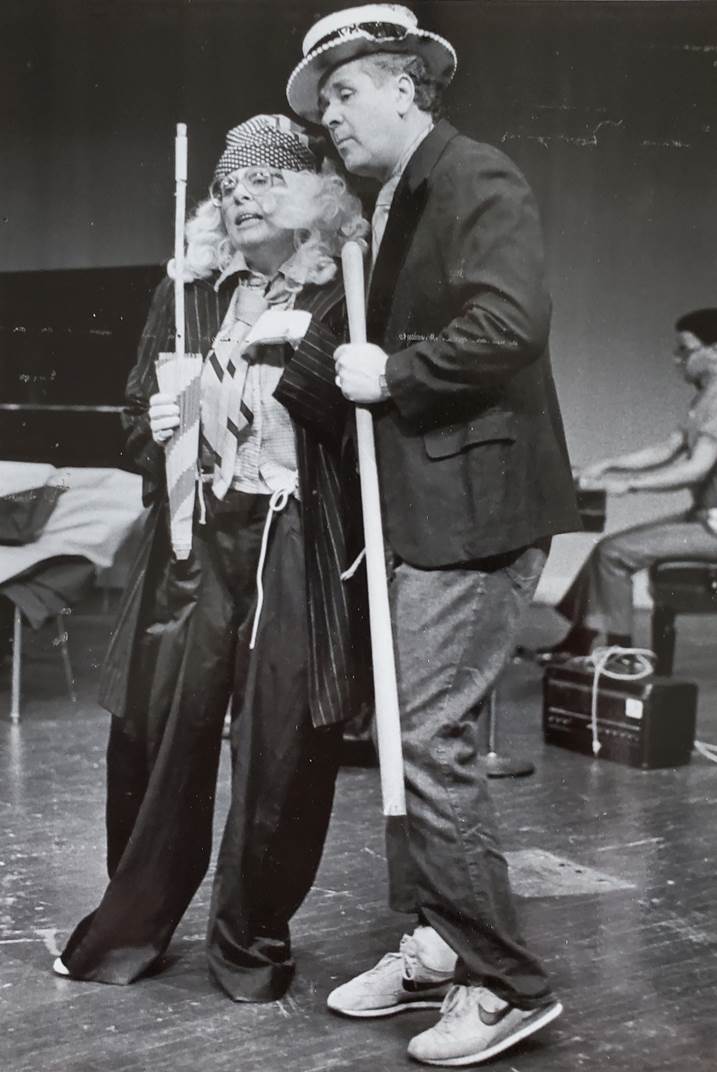
In the academic area the Communications faculty (the name of the division would later be changed to “English”) had been working on developmental courses for the past year. There were many challenges that the faculty faced; assessing student abilities, skills, organizing courses and their content and course sequences so that students could get through courses and build their skills to wind up being prepared to take the college-level Communications courses, working with foreign-born students, and providing all the necessary support services for all these students. The results of all their work bore fruit as reported in an end-of-year report. An attendance policy in the developmental courses was instituted. “Although the students disliked this new policy, attendance was better than in previous semesters and fewer students dropped the developmental courses.”34 The developmental Reading and Writing courses were restructured so that students had to demonstrate ongoing and continuing progress. In establishing this kind of approach it did away with the “end of the semester crush” . . . where “students would wait until the last two weeks of the semester to get their writing assignments completed.”35 Similar pacing and deadline procedures were incorporated in the reading courses.
The college’s commitment to the “Systems Approach” continued under Chapdelaine even though there was no full-time instructional developer at HCC as there had been in the 1970’s. That year Madaras developed a “Workbook of Learning Objectives” for his American History course. As the title says this was a set of learning objectives for his History 111 and History 112 courses, and this was a very thorough and comprehensive set of materials for the students.
In May, 1983, Dr. Charles B. Leonard, Jr., retired from the Howard Community College Board of Trustees having concluded his second six-year term as a charter member of the Board. His association with the college went back to when there was not even a college facility yet. He had been appointed to the Advisory Council for Howard Community College Board of Education in 1968 and served on it until 1971 when he was appointed to the college’s Board of Trustees. The Board acknowledged his contributions at their May meeting with a Resolution of Commendation.
Graduation, as in the past, was on a Sunday afternoon, June 5.
The fall 1983 enrollments were 3,620 credit students; thirty less than the prior fall; but the various age, sex, and ethnicity ratios tended to be about the same. There were no major shifts in any of the student demographics.
1983 was also the year that the college really got into computers. Burrill had always been interested in the use of computers as educational tools, and had done work in this area when he was at Miami Dade Community College where he had been involved in various projects involving programmed instruction and computer-assisted instruction. But now he also saw that more effective and efficient communication among the staff was possible with e-mail. Here is Burrill’s recollection:
I remember that if one of the deans wanted something they had to make an appointment with me. They would come in and sit down. They would tell me what they wanted. Then I had to think about it. So they would go back and have another appointment to come back and do it. After e-mail hit, they would send me an e-mail. I would think about it. Maybe we met and maybe we didn’t. I would send an e-mail back, and we would go. It just changed so much in the way we communicated.36
Valerie Lash, who was the Assistant of the Dean of Instruction at the time, recalls that the college began purchasing personal computers for faculty and administrators’ use. The devices were bulky, heavy, and had small monitor screens that were green. The company that manufactured these machines was Columbia Data Products, a local Columbia Maryland company that went out of business within a few years.37
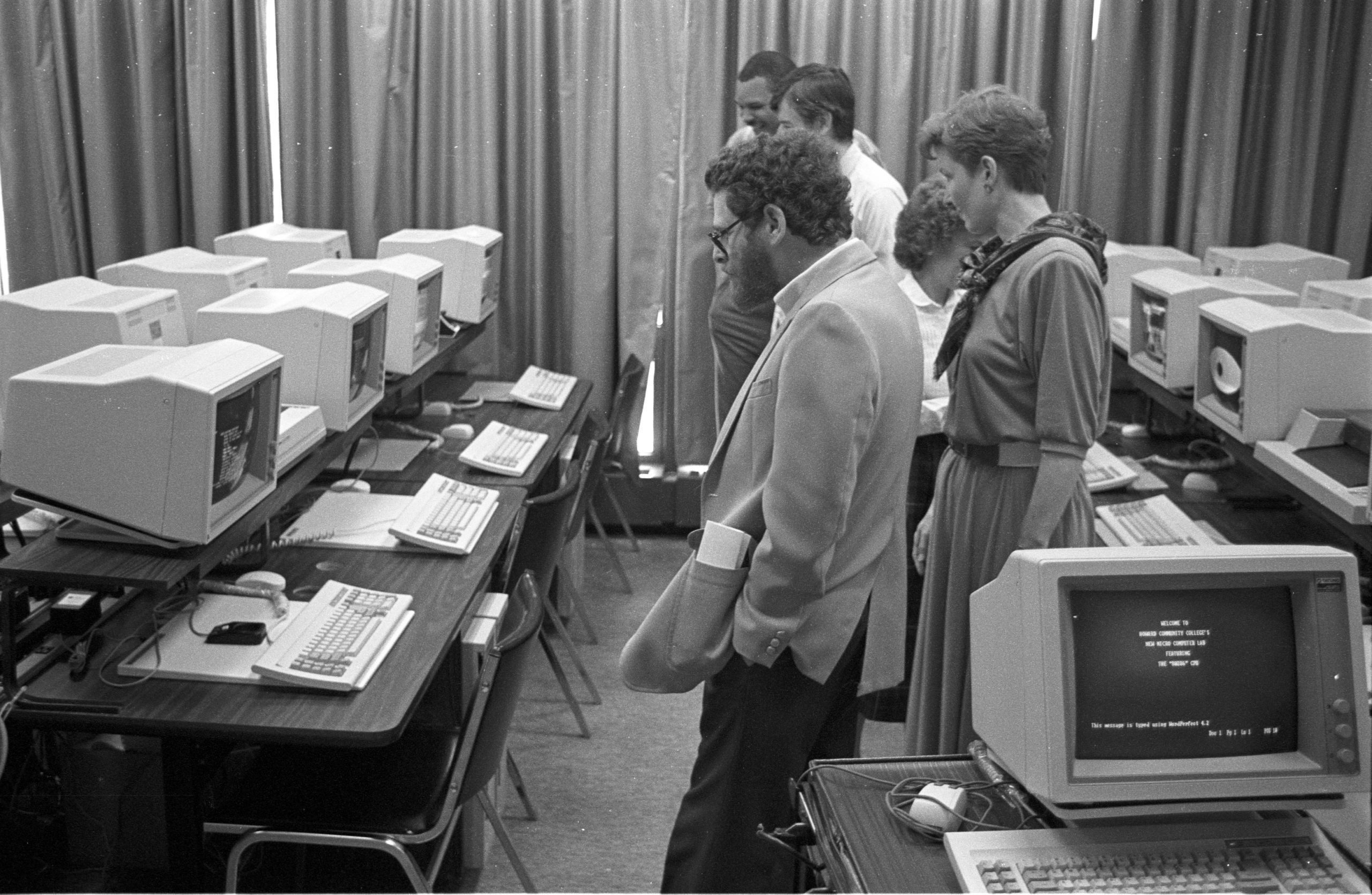
Communication within the college did indeed begin to move faster. Burrill also initiated the Augmented Cabinet. He had, of course, held regular meetings with his staff of senior administrators which he had named the President’s Cabinet – which certainly sounded quite presidential. According to Burrill the results of the 1983 Services Evaluation provided him with “some excellent ideas related to improving communication throughout the college.”38 This would be the composition of the Augmented Cabinet:
Beginning on Tuesday, November 29, I will be holding an augmented Cabinet meeting once a month. The chairpersons of the Faculty Forum, Support Staff Executive Committee and the College Council, as well as the president of the SGA and a representative of the Management Team will be invited to join the Cabinet. The Cabinet members include Roland Chapdelaine, Dean of Instruction; Frederick Nunley, Dean of Administration; Walter Bumphus, Dean of Students; Benay Leff, Executive Director of Public Relations and Development; Colleen Sarabun, Management Systems Specialist; and myself.39
1984, as most years, was full of crises, drama, and changes. The Winter Olympics were held in Sarajevo, Bosnia. The Indian Prime Minister Indira Gandhi was assassinated; the Soviet Union withdrew from the summer Olympics to be held in Los Angeles as payback for the U.S. withdrawal from the 1980 Moscow Olympics because of the Soviet invasion of Afghanistan. Bishop Desmond Tutu received the Nobel Peace Prize. In the U.S. Walter Mondale and Geraldine Ferraro were the Democratic candidates running against incumbent President Ronald Reagan and George H.W. Bush, his Vice President. This was a historic moment because Ferraro was the first female in U.S. history to be a candidate for such a high office. But Reagan still won in the November election by a wide margin. Apple introduced the Macintosh personal computer, and in the world of entertainment Michael Jackson got Grammys for the best record, “Beat It,” and for the best album, “Thriller,” and the best picture Oscar went to “Terms of Endearment.”
For Marylanders, March 28 was a date that will live in infamy. At 2 a.m. in the dead of night the owner of the Baltimore Colts, Robert Irsay, had a caravan of moving vans pack and move the Colts’ offices from Maryland to Indiana. The team would become the Indianapolis Colts.40
The big news in Columbia was that James Rouse, who had retired as operating head of the Rouse Company in 1979, but had stayed on with “the ceremonial title of chairman of the board,” had been devoting much of his time to The Enterprise Foundation which “was a nonprofit organization designed to provide adequate housing for the urban poor.”41 This apparently created some confusion and conflict in terms of Rouse’s role; so, he resigned from his position on the board and severed the final association with the company he founded.
At HCC, the college’s cultural program continued to grow. The theatre put on the production of Edward Albee’s play, “Everything in the Garden,” and what was even more memorable is that the theatre director was able to get Albee himself to come to the college and help direct the play. A month later, in March, the faculty put on the second annual Faculty Follies. The event netted $3,780 for student scholarships.42
Scholarship also dominated 1984. On the academic side of the house faculty scholarship continued with Professor of History Dr. Jerrold Casway’s biography of the seventeenth century Irish rebel leader, Owen Roe O’Neill. Casway’s book, Owen Roe O’Neill and the Struggle for Catholic Ireland was published by the University of Pennsylvania Press.
There was a major financial and administrative change at the college. The director of the Continuing Education Division, Helen Mitchell recommended to Burrill that the division should become self-supporting and while the acquisition of FTE funds could be a foundation for the division, ConEd should have greater entrepreneurial autonomy to pursue business and government training contracts and credit-free courses that could pay for themselves.43 Mitchell’s recommendation was approved by Burrill and he informed the Board of Trustees of this change.44
May was a busy month. Burrill was interested in how things worked and how things were running, so he spent some time in May “shadowing” students. He sat in on some classes, attended student meetings, and even “hung out” in the Student Activities Center. Burrill was certainly an advocate of management by walking around. The college also reinstated the four-day work week that began on May 28 and ran for eleven weeks. Summer classes were scheduled to be held on Monday through Thursday and only the gym would be open on Friday mornings. Fred Nunley, the Dean of Administration, estimated a 15-20% reduction in utility use.45 The idea was certainly good, but by now the college had become much more of a presence in the community and a number of organizations wanted to use the facility; so, being closed for long weekends presented some complications. In addition, the savings in utility use wound up to be only $6,929. The plan for the next summer was to return to a five-day work week and the buildings would “remain open on the weekends for scheduled events.”46
The twenty second graduation was held in the gym because the Wilde Lake Interfaith Center was no longer big enough for the ceremony. The day of the week of graduation was also changed. A Sunday afternoon ceremony did not seem to be the best day or time. Graduation was now held on Thursday evening, May 24 at 7:30 P.M. There were a total of 285 graduates; 243 A.A. degrees and 42 certificates were awarded. The speaker was Maryland State Senator James Clark.
Pedagogical matters occupied the Instructional staff of the college. A major effort in 1984 was the work on the development of a Writing Center. The creation of a Writing Center would be
…part of an effort to improve the quality of student writing – an effort shared by schools throughout the nation. The Writing Center is envisioned as the hub of a Writing Across the Curriculum Program. Consistent with the institution’s long-standing philosophy that writing is a skill that can be learned, not an art that is inherent, the Writing Center is dedicated to improving the writing skill of all students, regardless of their level of proficiency.47
The college’s commitment to improving both the reading and writing skills of students became a priority and resources were allocated. Since these skills were critical to a student’s continued progress and ultimate success in school, and in life, and because students were sensitive about their developmental stage in these areas, counseling support was added to the program. The result was that the Writing Center program became an established part of the college’s services.
The summer of ’84 had some highlights, and they were pretty big. Dr. Frederick A. Schoenbrodt was appointed to a six-year term on the HCC Board of Trustees. He became a major presence on the Board and was reappointed twice more; so, his tenure on the Board was eighteen years, and since his father, Frederick K. Schoenbrodt had been on the Board for two six-year terms, the Schoenbrodts tallied up thirty years of Board service to the college.
The summer was not over. In July alone HCC received a $300,000 FIPSE grant for the use of technology in classroom management, a $50,000 grant to support and expand its Cooperative Education Program, and a $13,000 grant from Howard County to enhance the college’s cable-casting activities.
The fall ’84 data that came out in September showed a dip by about 5% in credit enrollment and it is not clear why. The following two years were about the same, after which, starting in 1987, credit enrollments went up and continued to increase every year.
At the end of September the actor Kevin McCarthy gave his one-man show in the Smith Theatre entitled “Give ‘Em Hell Harry,” which had McCarthy portraying President Harry S Truman. The following month was quite active, too. The college was visited by the Nobel Laureate Isaac Bashevis Singer who read from his works on Sunday, October 21. That Sunday was also the first day of a three-day conference that the college organized and put on dealing with merit pay for faculty. The background for this is that the concept of merit pay reflected the current thinking in higher education in the ‘80’s and especially in community college circles, and since HCC had a system of Management by Objectives with merit pay as a part the idea of HCC running a conference both to show what we had and to see what others were doing seemed to make sense. Burrill and Bumphus were both active in a number of professional organizations; so they were interested in promoting the college’s merit program. The responsibility for organizing the program was tasked to Marinich who at that time was the Chair of the Business Division.48 The program was held at the Columbia Inn over a three day period. Some of the speakers were Dale Parnell, President of the American Association of Community and Junior Colleges, William Meardy, Executive Director of the Association of Community College Trustees, and John Roueche of the University of Texas. Both Burrill and Bumphus knew Roueche well. Bumphus had been working on his doctorate in Roueche’s leadership program at the university. There was also one faculty member from a New Jersey community college who represented the union’s approach to merit pay. There were over 50 participants from as far away as the northwest. Although the representative from the New Jersey community college presented strong, but predictable, arguments about the weaknesses of merit pay the conference got good evaluations from the participants.49
HCC was 15 years old in 1985. Of course the plan to have a college in Howard County goes back to 1964 when James Rouse had already been thinking about “educational facilities over and above the senior year in high school,”50 or 1965 when the Maryland State Department of Education “passed a resolution indicating intention to form a community college and move forward with that project.”51 The construction of the college began in the summer of 1969, but the official anniversary would be when the college opened its doors to students on Monday, October 12, 1970.
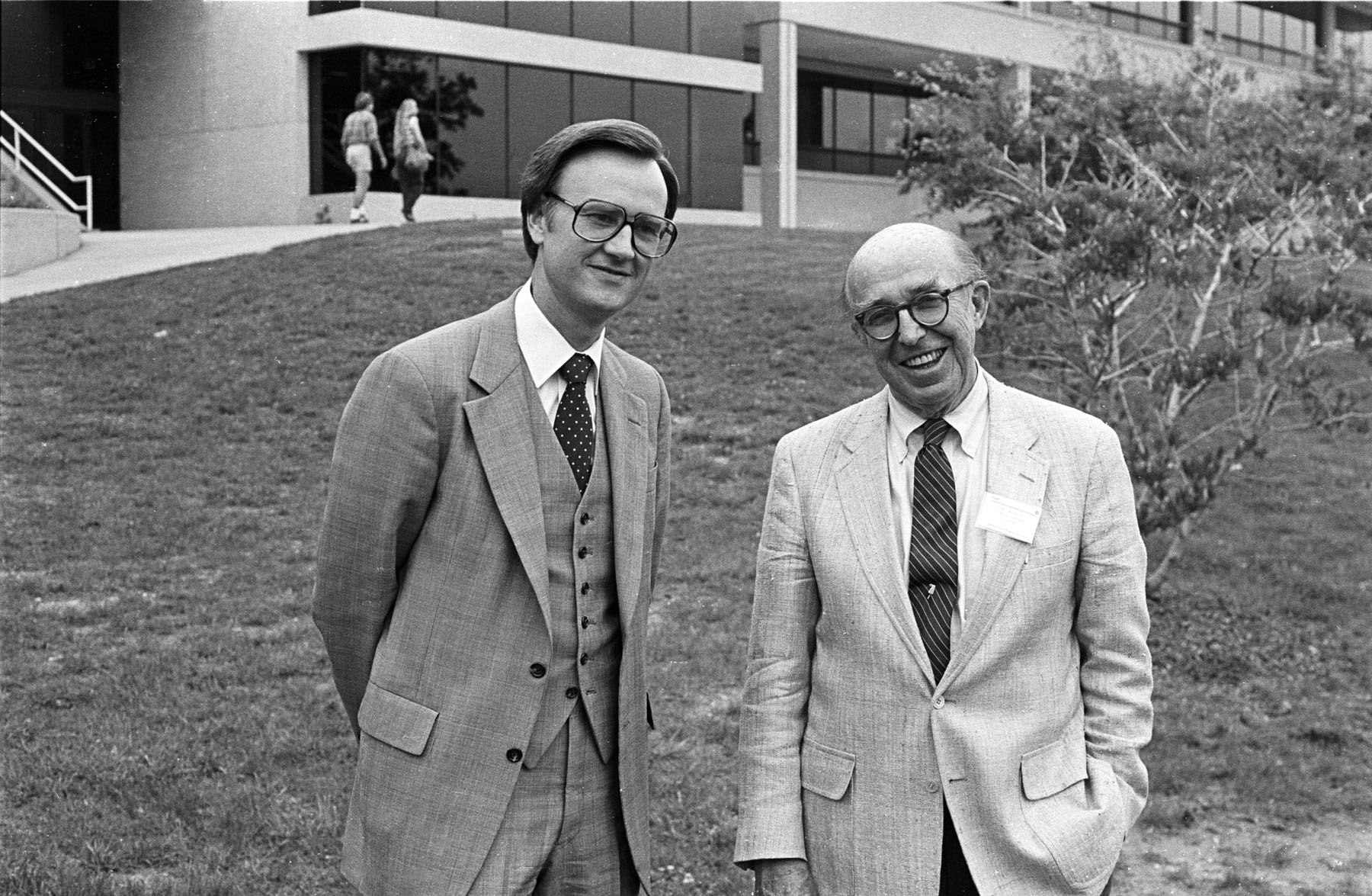
Out in the county the Glenelg Country School began its high school program. “Expansion to the secondary level began in the fall of 1985 with the ninth grade lodged in a temporary classroom behind the Manor House.”52
In the instructional area the big issue at HCC was grades. There was no “F” grade; rather there was an “X” grade to signify student non-performance, but this grade did not calculate into a student’s GPA. This “X” grade was in effect from the college’s beginning in 1970.
A lot can be written about the history of grades at HCC, but one of the key moments was in 1985 when the “F” grade was introduced, and the word “introduced” is appropriate because up until this time there had not been an “F” in the college’s first fifteen years. A student who did not master the course objectives satisfactorily received a grade of “X”, which was not a passing grade. In addition the description of the grade tended to be confusing. This was a “deferred grade due to incomplete work.”53 There was no “I” grade. From the very beginning in 1970 the “F” letter grade was considered to be psychologically punitive as well as damaging to a student’s GPA. This kind of thinking came out of the college’s early philosophy that systematic instruction also had to be humanistic.
At the very start the X grade was refined to distinguish between two kinds of non-performance. There was the X1 and the X2 grade. The difference between the two categories of X was that the former was assigned if the student did not complete the course objectives in a satisfactory manner for “student controlled” reasons.54 The latter grade, X2, was assigned for a student’s non completion of course objectives due to the student’s lack of ability. In other words, the X1 dealt with the student’s lack of motivation and the X2 was for lack of ability. The confusion that this created led to changes in the letter grades. The following year there was only one X, but an L grade was introduced. The X grade replaced the X1 and the L grade replaced the X2. This helped, but in 1971 the D grade was removed. The logic here was that within the context of systematic instruction where achieving course objectives signified satisfactory mastery of the subject, how to explain marginal and less than satisfactory mastery? All this was tied into mastery of objectives, non-punitive grading, and humanistic education.
The college culture in 1985 was certainly different from that of the Smith era. Burrill’s focus was on the use of technology and less on the details of pedagogical philosophy. The composition of the faculty was also different. When Burrill came to HCC in 1981 there were 44 full-time faculty. In 1985, 34 of them were still at HCC as were 14 “newer” faculty who did not have the experience of the prior years, and it must also be noted that of the “older” faculty some of them had never really bought into the Smith philosophy and therefore had more traditional views on grading. So, the faculty voted the F grade in and the X out; and the life of the college moved on.
Over the next fifteen years ConEd, as the Continuing Education Division came to be called, would run thirteen tours to Italy, China, Spain, Ireland, Egypt, Greece, and Russia. While these tours were not major money makers for the college they were very effective in gaining friends for HCC, and it should be remembered that ConEd was doing all this on a pay-as-you-go basis.
There was more that was going on at the college. Burrill recommended that tuition be increased from $30 to $32 per credit because of an increase in fixed costs. The Board approved. The Board also had a few changes. Ronald Carlson was appointed to the Board in the spring to succeed Seymour Barondes who had resigned in January, Dr. Edward Cochran was appointed in the summer to succeed Dr. John Sundstrom who retired. Cochran had been on the county’s Board of Education in the late 60’s when the Board of Education was also the Board of Trustees for the embryonic HCC. He had also been the County Executive in the late 70’s; so, he knew the college well.
It had been about seven years since the college had a full-time instructional developer. Dr. Al Mizell had been the first in that position. He had been hired in 1970, but the position was abolished in 1978. In 1985 HCC was awarded a FIPSE grant and hired a full-time instructional developer again. While the new instructional developer did train faculty in such areas as writing objectives, selecting alternative learning strategies, designing tests, etc., much more of his work was in the area of exploring technology and training faculty in its uses. The educational focus was changing.
The fall 1985 enrollments continued to show some decline with 3380 credit students, down from the prior year by 49 students. It would be a few more years before the enrollments would move up significantly. However, there were some interesting initiatives. Fall 1985 saw the start of a “2 plus 2” program that was an articulation agreement between HCC and the University of Maryland University College. UMUC would offer several upper division courses at HCC, mostly in business, information systems management, and computer science. HCC’s thinking was to give it a try.55 The program lasted a short while and few people at the college recall when or why it stopped.
October arrived and the college celebrated its fifteenth anniversary on Thursday, October 10 at Toby’s Dinner Theater in Columbia. The musical show was “Evita.” The guests were faculty, administration, college staff, former and current members of the Board of Trustees, the first president of the college, Dr. Alfred J. Smith, Jr., and his wife, Bernadene Hallinan who was the first director of HCC’s nursing program. Everybody was there including spouses and some children. There was a very nice, big birthday cake and several members of the Board, Smith, and Burrill each cut into the cake as part of the celebration. Photographs were taken and the event was quite a success. Unfortunately the next day a number of the participants got food poisoning, but all recovered quickly. So, there was no omen involved.
1986: WHAT A YEAR!
All years are interesting and filled with drama and events and 1986 certainly had many moments that were entertaining, thought provoking, troublesome, and moments of change, and that was particularly the case at HCC.
The world population went a little over 9 billion people, and that of the U.S. was a bit over 240 million. On the international scene the world recognized Elie Wiesel by his being awarded the Nobel Peace Prize, and in the world of American literature the Pulitzer Prize for fiction was awarded to Lonesome Dove by Larry McMurtry. The Oscar for best picture was won by “Platoon” and at the Grammys the best record and song of the year was “We Are the World.” In the World Series the Mets and Boston Red Sox went the whole seven games with the Mets winning, and in the area of TV, former Baltimore telecaster, Oprah Winfrey’s show went national.
On a worrisome level there was a nuclear accident in the U.S.S.R. at the Chernobyl power plant in Ukraine, and the tragic and sad news in the U.S. was the explosion of the Space Shuttle Challenger and, sad too was the passing away of the celebrated artist Georgia O’Keeffe.
Locally, Hugh Nichols resigned as Howard County Executive, having served almost two full terms in that office, from 1978 to the first half of 1986. The remainder of his term was filled by William Eakle who was the County Administrator. In November Elizabeth Bobo was elected the first female Howard County Executive.
Activity at HCC was impressive, but HCC’s history year by year always has been one of creativity, initiative, innovation, and change. This year was especially so, and maybe even more so.
The issue of the changes to the Nursing building was finally resolved. After several years of review and questioning the college’s space allocation, the Department of Health and Human Services was satisfied and stated that “it appears that the proposals for nursing space in the New Technical Arts Building, when added to space proposals for the grant-aided Nursing Education Building, will ameliorate the difficult conditions under which the nursing program operates.56
The Continuing Education Division proceeded with its program of overseas trips for the community that it had begun the prior year. In May a trip to Russia was coordinated by Hawkins and Marinich, and Marinich took the group to Moscow and Leningrad (St. Petersburg). A ConEd program that would be a major contribution to the college was a summer program for children that was named “Serendipity.” It began with four courses and under 40 students and under Mitchell’s direction it was coordinated by Sara Baum. The program would change names a few times, one such change was “Summer Sizzlers,” but it would ultimately be called “Kids on Campus” and within twenty years of hard work and growth would have enrollments of over 3,000 students.57 This was also the year that the ConEd Division began offering credit courses on weekends in the summer, and the program was appropriately named Weekend College.
A major reorganization of the entire college was coming. Some of it had been in the planning stages for almost a year and other parts of it happened fortuitously. Planning for a reorganization of the instructional area started sometime in 1985; however, it appears that communication at the outset created some anxiety among the faculty. “Uncertainty and rumors about the reorganization to be implemented in the fall of 1986, need to be addressed. We need to know why we are reorganizing, when the models will be presented, and how much input we will have in the final decision.” 58 At the next meeting of the Faculty Forum Executive Council the Dean of Instruction, Roland Chapdelaine, confirmed that there would be a reorganization in 1986, but he could not say whether it would be major or not. He is reported to have said that there would be some things that would not be open for discussion and that he would indicate which. “Furthermore (he) will make the final determination regarding the implemented plan.”59 These reported comments by Chapdelaine were an unfortunate choice of words because based on this exchange the perception of some of the faculty was that their input and participation would be limited about things that would affect them.
The organizational structure of the instructional area had been a traditional one for several years. The divisions were Business, Math/Science, English/Humanities, Nursing/Health, Social Sciences, Continuing Education (ConEd), and the Learning Resources Center (LRC). Each division was headed by a Chair, although ConEd and the LRC were under Directors.
Chapdelaine apparently had been thinking about various organizational structures for some time. At a meeting of the Faculty Forum Executive Council he mentioned that he had “collected about 35 different community college organizational charts” to see if and how some of them might fit HCC.60 HCC’s archival records show that there were three models that emerged and were presented to the faculty; although at present there are only copies of two models that have been located, and there is only a passing reference to a third model.61
One of the possible structures that Chapdelaine presented to the faculty is seen below.

This is the first time at HCC that a title of Vice President for Academic Affairs appeared as a possible position, and that a Dean of Instruction might possibly be a position under a vice president. This idea for an organizational structure did not gain much traction because much of the detail was left out. There was no specification for how the faculty would be organized, and this was a problem. One of the points that was made at the Faculty Forum meeting was that “in any model the larger faculty/administrative grouping be called divisions (not clusters) and the smaller groupings be called departments.” There were 23 faculty present at the meeting and the motion was passed unanimously.62 The college had 48 full-time faculty in 1985.This vote with almost 50% of the faculty in attendance showed their interest in the matter and also showed that some of the faculty were content with a more traditional structure as long as it was not along the lines of the cluster concept of the 1970’s where disciplines tended to be broken up and distributed to serve in structures that were oriented to student career choices.
A second model was contemplated by Chapdelaine; it would group discipline faculty together but not in departments, nor would larger groupings be called divisions. Since its inception the college generally avoided traditional discipline-oriented departments; thus Chapdelaine’s “Model 1B” was an attempt to continue along this path.
The following figure shows the model that was generally accepted by the current HCC administration at the time, and very generally by the faculty – at least by some who attended the Faculty Forum meeting. There would, however, be some changes.
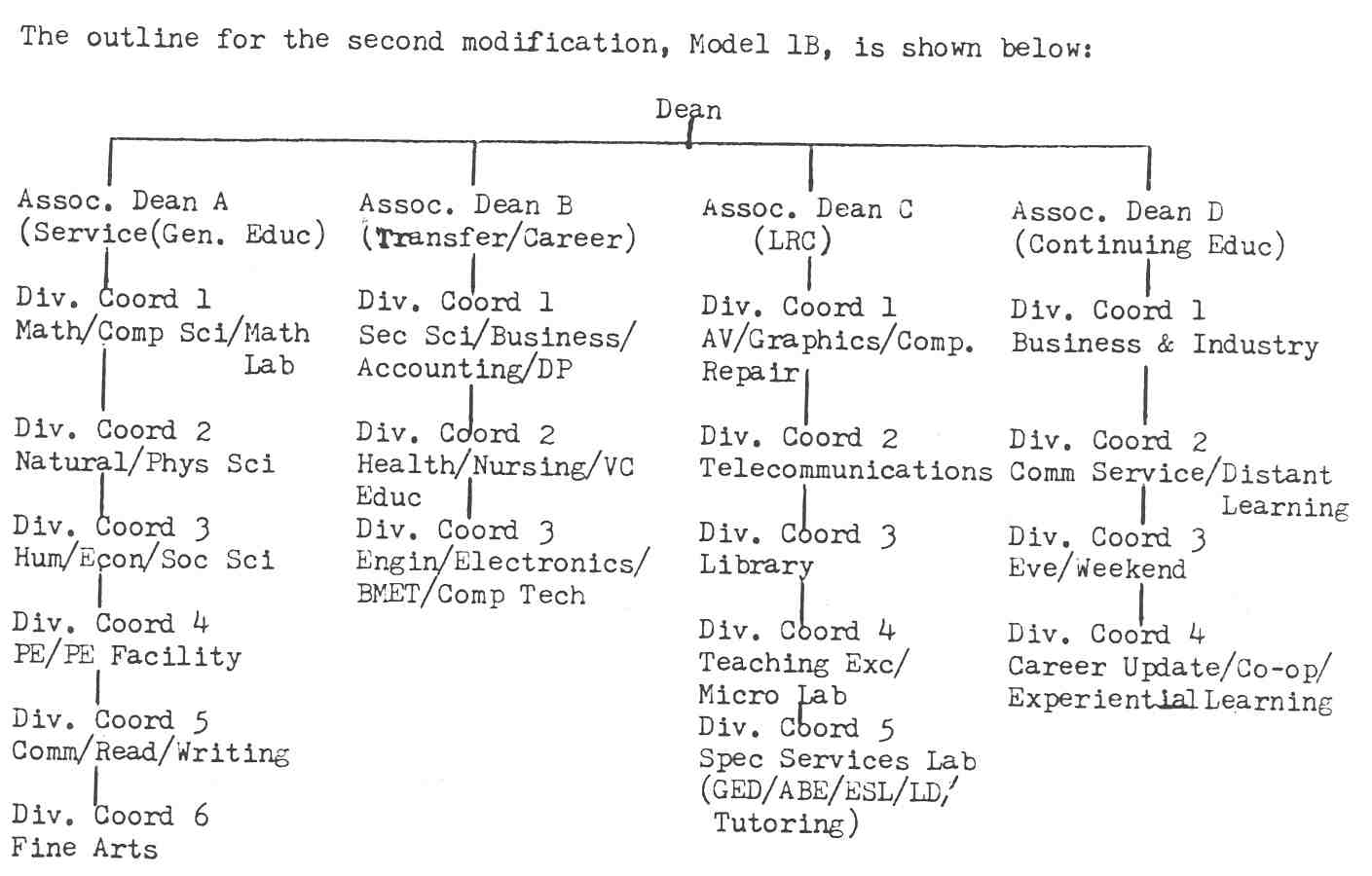
While some faculty preferred a more traditional division/department structure, there were those who saw the above model as being more flexible, producing greater unity and communication among faculty within a division, and with nine faculty coordinator positions proposed it opened up the possibility of career paths to faculty who aspired to more administrative duties.
By March Chapdelaine had continued to refine his thinking about the reorganization, but a distraction popped up in the rather sudden resignation of Professor Jack Morton who was the Chair of the Humanities/Social Science Division. Morton was quickly replaced on an acting basis by Sociology Professor Mark Canfield, who would serve in this capacity into the summer. On the other side of the house, the Dean of Administration, Fred Nunley resigned.63 And, while all this was going on Chapdelaine was seeking to advance his career by actively looking for his next job elsewhere in a position that would be higher than that of a dean. The joint was really jumping.
Nunley’s resignation gave Burrill the opportunity to review his administrative organization. He could now look at the entire administrative area, finance, plant operations, human resources, services such as the bookstore, cafeteria, and whatever else. And indeed he did. In Burrill’s own words:
After working in various administrative positions in four different institutions of higher learning, I have come to believe that the management of the financial operations of the institution should be separated from the management of the other services. Fred Nunley’s resignation provides an opportunity to begin to develop such a structure. As a result, I have decided not to fill the dean of administration position. Instead, I have taken some of his responsibilities into my office and I have distributed others to the deans.64
By reassigning the functions that had been part of the Dean of Administration’s responsibilities to other areas Burrill was reorganizing all other areas. As of the date of the writing of this part of HCC’s history the archives have not turned up an organization chart of the new structure; however, Burrill did describe what the new organization would be in a fairly lengthy memo that this author used to construct organization charts for the Student Services area and for the Institutional Advancement area. Burrill’s new structure assigned more responsibilities to the Student Services area, and he upgraded the position of the Director of Public Relations to Dean of Institutional Advancement. The basic chart of his senior staff looked like this:
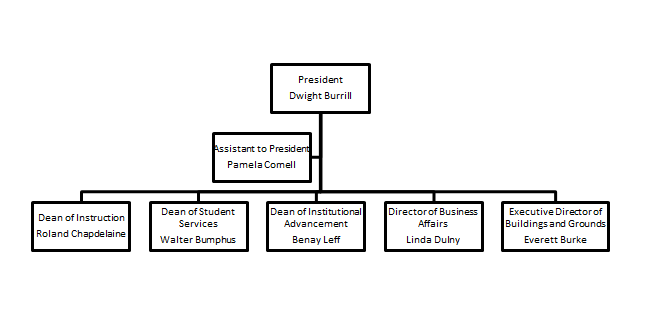 The major additions to Student Services and Institutional Advancement are shown below:
The major additions to Student Services and Institutional Advancement are shown below:
STUDENT SERVICES
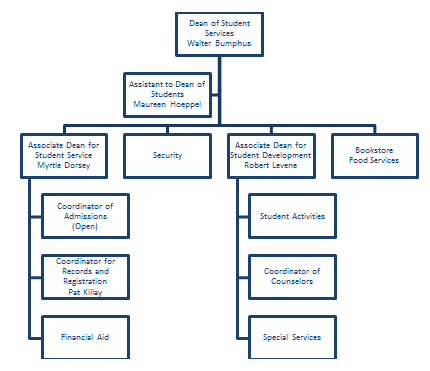
The area of responsibilities and authority of the Dean of Student Services increased as that of the Dean of Administration decreased. This was certainly clear as Burrill reorganized his administration, and Nunley’s departure is not surprising since a number of functions that had been part of the administrative area were transferred to student services while Nunley was still the administrative dean.
INSTITUTIONAL ADVANCEMENT
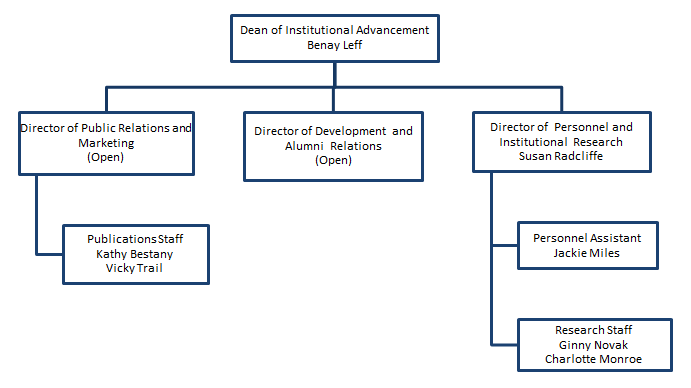
This organizational structure made sense in that most of the functions were interrelated, and since the personnel and research areas were under one director, it worked. In addition, since Burrill decided not to fill the administrative dean’s position, it was not necessarily the most efficient for the president’s office to have even more areas reporting directly to him.
The instructional area would stay much as has been shown above; although a minor shift of the discipline area was made, and that was in moving Physical Education, which included health courses, to be in the same area as Nursing.
By June 1 the organization of the instructional area had been pretty much set. There would be four major divisions, each headed by an Associate Dean, and under the Associate Deans would be Curriculum Coordinators. Martha Matlick was selected to be in charge of Nursing, Health Education, Fine Arts, Social Sciences, English, and Languages. Daniel Friedman would have Mathematics, Science, Business/Accounting/Retail, Data Processing, Secretarial Sciences, Engineering/BMET, and Construction Technology.
Continuing Education would be under Helen Mitchell, and Peter Ku would have Library Services, AV Services, the TV Studio, and the Teaching Excellence Center. This area would be known as Instructional Support Services. Marinich was offered a position still to be worked out as Director of Adjunct Faculty and Evening Services. Since he had done that kind of work several years before, Marinich chose not to pursue it and to return to teaching full time.
By the end of the month Chapdelaine had resigned from HCC. He had accepted an offer from Mohave Community College in Arizona. He would be a vice president there.
So, an internal search was formed to appoint a Dean of Instruction. The candidates were Peter Ku, Robert Levene, and Helen Mitchell. Ku got the job and immediately opened an internal search for his replacement as Associate Dean of Instructional Support Services. Marinich was encouraged to apply, which he did, and he was appointed to that job. The structure that was developed in 1986 would last for about five years, but the weakness of it was that it had too much discipline diversity and, as the college grew, the span of management of the Associate Deans was too wide.
The college was growing again. After several years of a slightly declined student enrollment HCC’s enrollments began to move up again. The fall ’86 credit enrollment was 3,630 students, which was about what it was in 1983.
It should be noted that enrollment is helped by having effective processes in admissions and registration. It appears that by 1986 the One-Stop-Shop concept was coming into operation. It had probably begun somewhat earlier, but by now telephone registration was in place, (on-line registration was not yet developed) and there was a physically and organizationally centralized system to make a student’s admission and registration easier. An Associate Dean was in charge and Admissions, Registration, Records, Financial Aid, and the Test Center. All these functions were located close to one another, as was the Cashier’s office. There was no longer the need for students to run about from one place to another to be processed.65
There was just one more organizational change to make. At the end of the year, November to be exact, Burrill hired Lynn Coleman to be the Comptroller of the college. As Comptroller Coleman would be responsible solely for the accounting and financial administration of HCC.
And that was 1986!
1987: RESURGENCE
1987 was another most interesting year. On the international stage the Iran-Contra affair became public knowledge and President Reagan made his “Mr. Gorbachev, Tear Down This Wall” speech. The art world hit a high, that is a money high, with Vincent Van Gogh’s painting “Sunflowers” selling for $39.85 million. In May the first heart-lung transplant operation was performed in Baltimore.
There was something else that popped up that year on the national scene that at the time was probably of interest only to the business world. Hot on the heels of Management by Objectives a newer philosophy of management came to the fore; it dealt with the need to demonstrate quality in the work world. “TQM was embraced by corporate America from the mid-1980’s” and “Congress was so impressed with the potential of the quality movement that it created the Malcolm Baldrige Quality Award in 1987 to recognize companies with exemplary quality practices.”66 The reader will understand this because in less than two decades educational institutions, and HCC, would be involved in this program.
The college’s involvement in cultural activities and in becoming a community high-profile presence goes back to the beginning; however, some major initiatives that emerged around 1987 had really started in 1983 when Burrill established a cultural arts committee to recommend short and long range programming recommendations.67 Burrill’s interest in such things continued over the years. Toward the end of 1987 he approached the County Council with his vision to have the college develop a cultural arts complex (see Appendix G), and to this end he stated his intention “to include planning money for the project in his upcoming capital budget request.”68 While most of the County Council and the County Executive spoke well of the idea the requested planning amount was $590,000 and the estimated cost to build a cultural arts complex on campus would be at least $6 million. County Executive Elizabeth Bobo is reported to have said, “I think it would be a good idea to have a cultural arts center in the county…but it’s a matter of balancing it with other capital requests.”69 The project was not funded. Burrill also noted that the Board of Trustees was “lukewarm” to the idea.70 Nevertheless, the college continued to grow by participating with other organizations in providing cultural activities to the community and in taking the lead at times.†
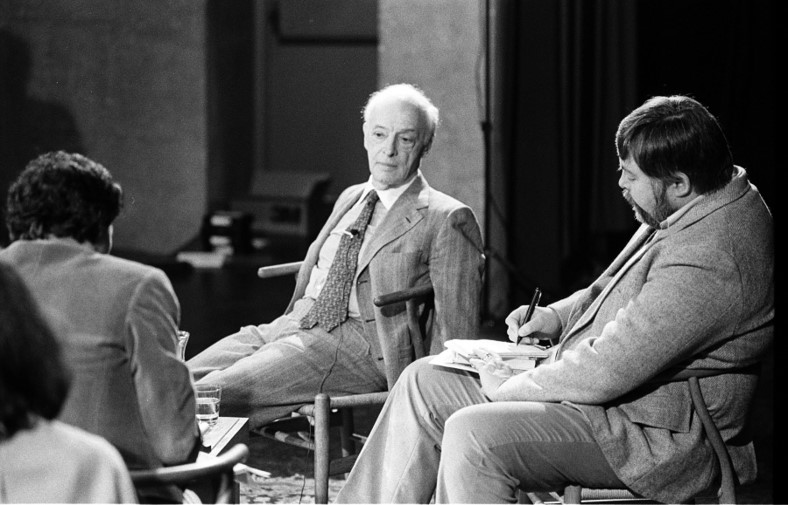
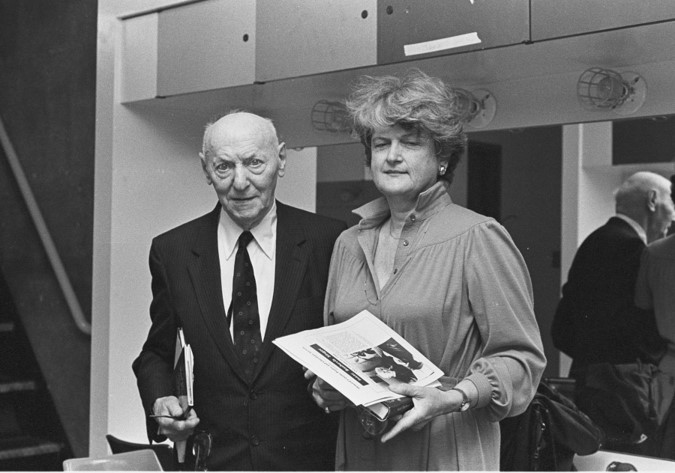
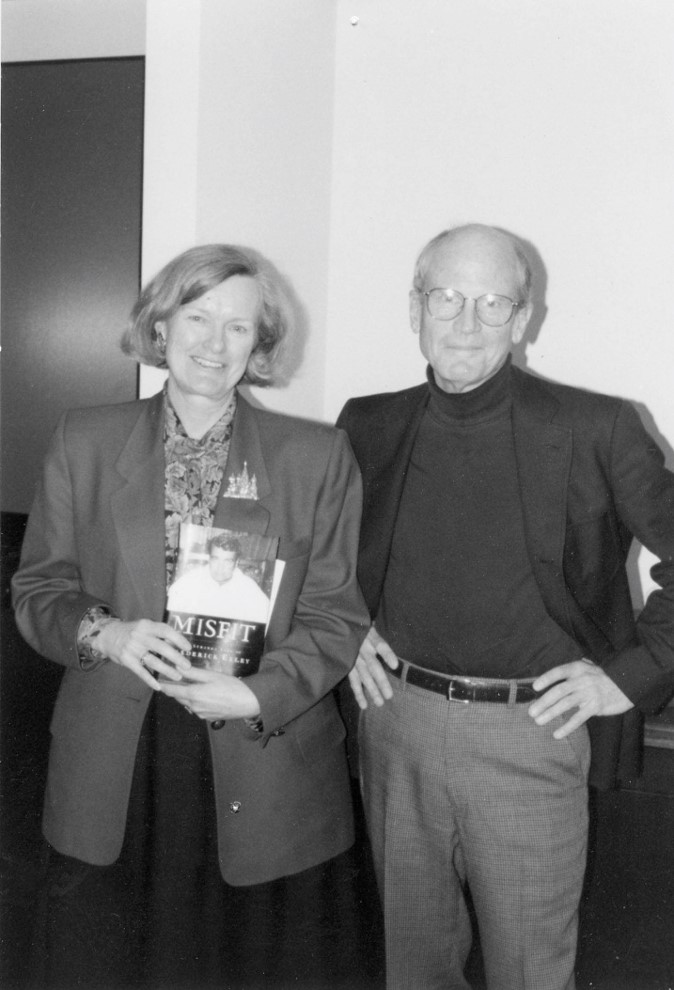
The college’s involvement in the Grand Prix goes back to 1987; although in that year HCC’s involvement was a bit peripheral. The first Grand Prix was organized through the efforts of Oliver Kennedy, an organizer of equestrian events, to raise funds for the U.S. Equestrian Team. The college’s only role was to provide the field for this event. Neither the Foundation Board’s minutes nor the Trustee Board minutes have any mention of the 1987 Grand Prix.
The following year the college became more involved by organizing and sponsoring the event on college property, and in making it an HCC scholarship fundraiser. It was quite the cultural event. This was not a Wild West Show or a Rodeo. It was an elegant event that demonstrated and challenged a rider’s and horse’s jumping ability and style. The riders rode English saddles, wore the traditional red or navy blue show coats, riding breeches, tall boots, and helmets. Donors had tables in the canopied tent and many were fashionably dressed for the occasion.
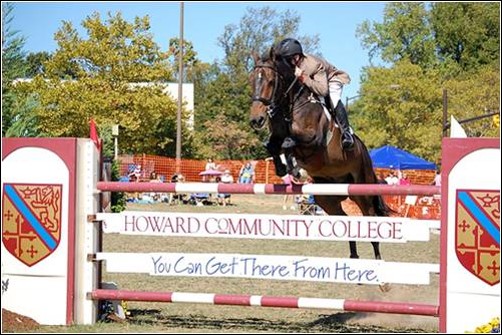
There was another major cultural/community initiative that year. It had been twenty years since Columbia’s official beginning in 1967 and a celebration was planned to recognize this anniversary. The Ryland Corporation contributed to this event, which was called “Hail Columbia.” This event triggered the idea to have an annual Festival of the Arts, and Burrill was on the committee to get it going. Other pioneer participants were C.E. (Ted) Peck, CEO of the Ryland Corporation, Padraic Kennedy, President of the Columbia Association, and Richard McCauley, Vice President and Counsel of the Rouse Company. The following year saw the start of the detailed planning for the Festival of the Arts, a major event that has gone on each year since then.
In April the Smith Theatre hosted the National Players’ presentation of “Romeo and Juliet.” That same month the college initiated an “Evening of Excellence.” This event was held in the Smith Theatre and its purpose was to recognize the achievements of one teacher from each of the county’s high schools and of high school students. Twenty-two high school students were awarded scholarships to attend HCC. This was a well received cultural and community activity, and it was certainly a good way of promoting the college.
HCC had a TV studio whose primary function at the time was to support the instructional area. The studio was involved in helping faculty to videotape classes and in promoting the studio’s use of that technology for instructional purposes. Telecourses, which had been growing over the past few years, were cablecast over the college’s Cable 8. This was a channel that was shared with the county’s Department of Education. In addition to all this the studio also produced programs that would be of interest to the community. Three major monthly programs were “Legal Line” that was an interview program where attorneys discussed various legal matters and issues. “To Your Health” was a program devoted to various health matters and was produced and hosted by HCC’s Professor Linda Johnston. The third program that began in 1987 was “Howard Perspectives.” This program was coordinated and produced by Marinich and was hosted by Burrill. The intent of this program was to have interesting people from the community come on as guests and be interviewed by Burrill.
There were a number of administrative and instructional activities that year. The college and the Ta-Hwa Junior College of Technology of Taiwan signed an exchange agreement whereby HCC faculty and students could learn Chinese. The May graduation, HCC’s sixteenth, had Representative Benjamin Cardin as the keynote speaker, and that same month Leola Dorsey retired after fourteen years as a college trustee.
The spring 1987 credit enrollments looked good. True, they were lower than the fall ’86 enrollments, but spring enrollments being lower than the prior fall were usually the case anyway. However, the spring ’87 drop was less than in prior years. The drop in enrollments from fall ’85 to spring ’86 was 179 students, but the drop from fall ’86 to spring ’87 was 42 students. So, it looked like things were getting better.
Fall ’87 credit enrollments were up even as tuition went up to $40 per credit for county residents. At a headcount of 3,752 it was 222 higher than the fall ’86 numbers. Telecourses helped. Their headcount in spring ’87 was 240, up from 181 the prior spring, and the fall ’87 enrollment was 303, up from 247 in fall ’86. The Dean of Instruction, Dr. Peter Ku, was a strong supporter of telecourses as an alternative to traditional scheduled classes. He saw the need to provide students whose life and work schedules made it difficult to attend regularly scheduled classes with a more flexible independent study option.
Since its inception the college had employed adjunct faculty to teach “foreign” languages. The growth of the college and a consciousness raising of the importance of world languages led to HCC hiring Cheryl Berman as the first full-time instructor in Spanish and French.
Some time in August the college acquired space in the Sterrett Building in downtown Columbia with a $100,000 three-year lease. The plan was to use the facility to offer about twenty five credit and credit-free courses in the fall. The facility would be called, and have a noticeable sign on the building, “Howard Community College Professional Center.”71 In addition to courses the Professional Center was also used for various occasional HCC constituent meetings. This satellite facility was one of two off-campus sites; the other was a business center in the Rivers Corporate Park south of Columbia.
Meanwhile, back on campus there were two important things in the works; a survey had been taken of students and staff that “indicated a smoke-free campus was desired. As a result, the administration recommended no smoking on campus except in one designated area,” but a petition signed by 323 individuals, students and staff, requested a re-evaluation of the no-smoking recommendation. The Board of Trustees “unanimously approved the following smoking policy: There shall be no smoking in campus buildings except in the designated smoking area(s).”72 The policy allowed several smoking areas, outside of buildings, and with minor location changes this policy continues to be in effect. The second thing was the start of the construction on the Science/Technology Building and the Galleria/Student Services Center.
At the October Board of Trustees meeting Burrill announced that the deans would have new titles. “Effective November 1, 1987 the following new titles will be implemented:
Vice-President and Dean of Instruction
Vice-President and Dean of Institutional Advancement
Vice-President and Dean of Students”73
The position of the Comptroller was not re-titled to that of Vice-President/Comptroller until almost a year later.74 It appears that the new titles were not implemented for any legal or management reason; rather these titles were created to enhance the resumes of the deans.75
Do we keep saying that the college was growing? Yes, and it certainly was changing too.
’88 WAS GREAT!
As always the world was moving along during 1988. The Soviet Union agreed to pull its troops out of Afghanistan after almost a nine-year conflict. The summer Olympics were held in Seoul, South Korea. In the U.S. Vice President George H.W. Bush defeated Michael Dukakis, Governor of Massachusetts for the presidency of the United States. A federal law was enacted that banned smoking on all domestic flights of two hours or less. A first-class postage stamp was 25 cents. The Eli Lilly Corporation introduced Prozac onto the market, and Rush Limbaugh began a syndicated radio program. A NASA scientist, James E. Hansen, warned a U.S. Senate committee about impending global warming.
In Howard County Elizabeth Bobo was in her second year as County Executive. One of her recommendations that was associated with HCC was to propose that a study be done to determine whether there was a need for a cultural arts center on campus.76
At HCC Phil Chenier was employed to be the Coordinator of Student Activities. Chenier was a well-known name in the Baltimore-Washington area. He had been a professional basketball player (a starting guard) with the Washington Bullets from 1971 to 1980. Chenier was able to connect with many students. On a sadder note, though, HCC lost music Professor Art Monroe to cancer in February. Later that month the college held a memorial tribute to him in the Smith Theatre. His colleagues from the music world and his students played some of the music that he had written. Monroe was a major contributor to the formation and growth of the music program at the college. He had worked on developing the program, courses, a choral group, and various music events for both the college community and for the community at large.
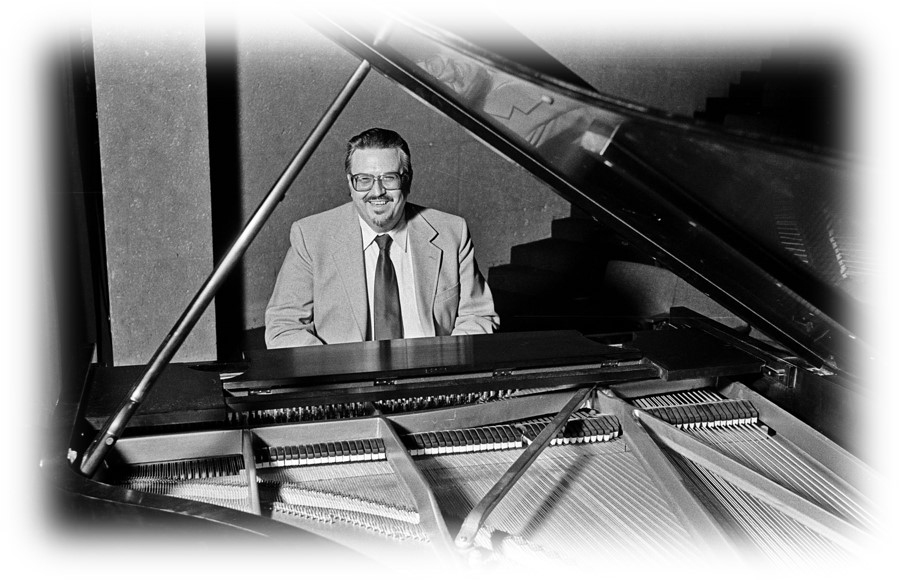
The college continued its involvement in cultural and community activities. Burrill announced to the Foundation Board that “the Columbia Equestrian Center will host a Grand Prix horse jumping event on the college’s front lawn on Sunday, August 7. Some of the horses and riders will then go on to the summer Olympics in Seoul, Korea. The HCC Educational Foundation and the Olympic equestrian team will share in the proceeds.”77 This was really the first year that the college was an active participant in this event, and there even was an HCC poster that claimed that the Grand Prix was established in 1988., and based on the competitors who went on to the Olympics it was quite a coup for HCC to be so involved, but unlike the report that the “First Grand Prix horse-jumping event is held at Howard Community College. It nets $100,000 for the school’s scholarship program,”78 the college’s net for that year’s event was $5,170.79 In subsequent years the net would be significantly more.
The Foundation Board also planned several other events as part of its 10-year anniversary; the Foundation having been established in 1978. A Columbus Day chase, a golf competition entitled the Discovery Day Golf Classic, and the Celebrity Tennis Challenge were planned for 1989. Most of these events were planned as yearly events, but one of the discussions that the Board had was how to deal with all these events. The Foundation Board felt it necessary to assess what they were doing. John Miller, a member of the Board “stated a decision must be made whether we are satisfied to keep the golf tournament as a goodwill event or do whatever must be done to make it a moneymaker.”80 The issues were reserving a golf course, anticipated expenses versus revenues, and the event’s goodwill impact on the community and its public relations value. A decision for the following year’s golf competition was postponed.
There were some other events that promoted the college’s good name. Two years earlier, in 1986, Alice Cornelison was an active member of the Howard County African American community and was a member of the county NAACP. She was putting together a book titled History of Blacks in Howard County, Maryland.81 She approached the college for some assistance and Burrill agreed to help and asked Marinich to coordinate the assistance. The AV coordinator, Quent Kardos, assisted with all the photographs that would be in her book and as HCC’s graphic artists were also involved, the idea occurred that this work would also make a good historical documentary. Consequently, Cornelison, Kardos, and Sue Davis, the coordinator of the TV studio got together and put the project into action. One of the TV Studio employees was Nigel Reed. He had prior TV experience both as a technician and as an actor; so, he was put on the project. The result was a television documentary that was titled “Word of Mouth; the Black Experience in Howard County.” It included a number of interviews as well as still pictures and narration. Upon completion it was announced to the community and a showing was put on in the Hallinan Lounge to a sizeable audience. It was later telecast on HCC’s cable Channel 8 and went on to win some TV awards.
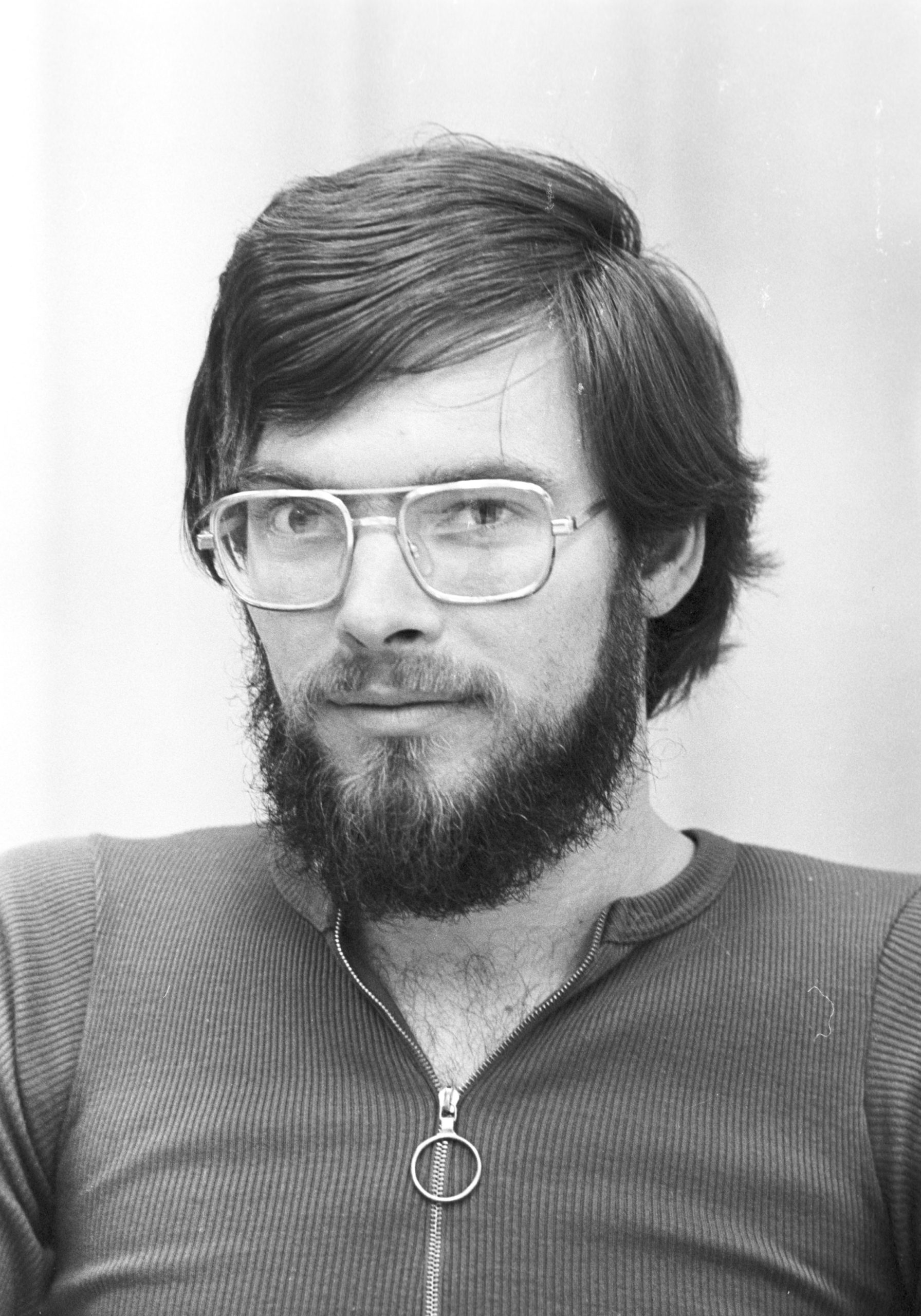
HCC’s library began a fundraising and a fun project that would last until 1995. The library staff and the Vice President of Institutional Advancement, Benay Leff, came up with the idea of a Celebrity Book Auction. The library contacted authors and publishing houses and requested a signed copy of an author’s book, fully explaining the library’s goal of raising funds for the library’s collections. The books that were sought came from the list of new and current fiction and non-fiction bestsellers. The responses from publishers and authors were very positive, although there were some books that the library purchased, and as soon as the library staff thought that there were enough books received, they planned an evening auction that would be open to the community, and they advertised the event. The evening was elegant. The books were on display, there were refreshments, and an auctioneer.
The Columbia Festival of the Arts requires some attention as a major cultural initiative. Its conception was based on the prior year’s “Hail Columbia” concert that celebrated the planned city’s 20th anniversary. A key sponsor of this event was the Ryland Group headed by Ted Peck. Shortly after this event, as mentioned previously, an ad hoc group was formed that began to think of a broader festival that could become an annual event. More individuals were asked to join the group. It now consisted of Peck, Burrill, Richard McCauley and Michael Spear of the Rouse Company, Nancy Smith, Vice President of the Ryland Group, Padraic Kennedy, President of the Columbia Association, Elizabeth Bobo, and community residents Ronald Carlson, Jean Spangler, Jean Moon, and Mary Toth.82 Various performances would be held at the college’s Smith Theatre, the Merriwether Post Pavilion, Columbia’s lakefront, and other public areas. This would not be a single concert, but a weekend long series of musical and theatrical performances. The breadth and depth of the vision for this festival was summarized by Peck. “Over time, the festival could have the kind of impact as the Spoleto festival in Charleston, S.C., and the Los Angeles Arts Festival. It could be a real attraction.”83
There was a big discussion over what [the festival] should be called, because the question was should it be the Columbia Festival of the Arts or should it be the Howard County Festival of the Arts or the Howard Festival of the Arts. It was an interesting dynamic, because the feeling was that Columbia on the one hand was a limiting name but on the other hand was an expanding name. It was an interesting dynamic. The feeling was that anything with Howard County immediately limited it geographically, and it would never be able to grow beyond Howard County. But Columbia even though it designated Columbia also had a broader meaning of Columbia … [such as] The Columbia University and the District of Columbia. It was a broadening name, so the group felt that the name Columbia made sense. It designated the location, but it didn’t limit it geographically. So that name was selected.84
The administration of the festival was incorporated and Burrill was the first president.
The college certainly continued with its other cultural and community activities. Candlelight Concerts performed in the Smith Theatre, writers such as Wallace Terry, a Time magazine correspondent spoke about his experience in covering the Vietnam War from the perspective of black and white soldiers fighting together.85 Theatrical performances were a big part of HCC’s cultural involvement and in March the National Players performed “Dracula: the Vampire Play” in the Smith Theatre.
On the academic side, enrollments continued to grow. Spring ’88 credit enrollments were higher than ’87 and fall ’88’s were higher than fall ’87, and telecourse enrollments also grew. The enrollment of all minority students, identified in those years as Black, Asian, American Indian and Hispanic continued to hover at around 17%. The catalog also grew. The 1988-1989 catalog had three additional options in the Liberal Arts A.A. program: Laboratory Science, Music, and Pre-Allied Health. This brought the number of options to 17.
The Continuing Education Division continued to serve the community and some of the programs that were in demand were various refresher nursing courses and those that were offered to provide nurses with continuing education units. Business and management courses of all kinds were offered and, since the real estate market was active in these years, there were courses in Basic Real Estate Principles as well as courses for individuals who wanted to get a broker’s license. ConEd continued its international trips with a community group tour to Spain in June led by HCC’s reference librarian Jean Soto.
Finally, Bruce Reid, Professor of Biomedical Engineering, received the 1988 Instructor award from the State Council on Vocational-Technical Education. He was cited for his contribution in developing innovative occupational programs.86
THE END OF THE DECADE
1989 was a year of major turmoil in a number of parts of the world. A tragic incident in China that had international reverberations was the Tiananmen Square demonstrations by students and intellectuals that led to the Chinese government’s suppression and killings of that day. Revolutions in a number of Eastern European countries signaled the eventual collapse of the Soviet Union and the beginning of the post-Cold War period, and the Berlin Wall came down. The Dalai Lama received the Nobel Peace Prize, and in the celebrity world the actor Daniel Radcliffe, better known as Harry Potter, was born. There were several noted passings: the surrealist artist Salvador Dali passed away as did the controversial photographer Richard Mapplethorpe, and from the world of show business we would miss the voice of Bugs Bunny, Mel Blanc. The first “Batman” film was the year’s blockbuster, and the Oscar for best film went to “Driving Miss Daisy.”
Locally, Ruth Keeton resigned as chair of the Howard County Council after 23 years of serving the county. The first Columbia Festival of the Arts was held as a three-day event from June 23-25, and the first high school senior class of the Glenelg Country School graduated.
HCC’s TV documentary, “Word of Mouth” won the 1989 President’s Award for Achievement in Video Production in February 1989 by the Association for Educational Communications and Technology (AECT) Conference and Infocomm International Exposition. And while “Word of Mouth” was being hailed, the TV studio’s Nigel Reed was already into production and directing his next documentary titled “Mile Markers: Old Frederick Road.” This history of part of Howard County would win an award the next year.
HCC enrollments were doing better than alright. The spring ’89 credit enrollments were 3,971 and that was higher than fall ’88 at 3926. Even though it was a small increase, still that was unusual. The increase seemed to be in more part-time, male, evening students. Most of the other statistics were similar to prior semesters, but this time the ratio of fewer male students to female students was not quite as great a difference as in the past.
The Science/Technology Building‡ was under construction, as was the Student Activities Center, and as a centerpiece, a galleria that was a full two stories high connected the two buildings with the Library Building and the Nursing Building. The lower level of the Science /Technology Building would be occupied by the Bookstore and Cafeteria. The south side of the Library Building would house the Admissions Office, Counseling, Records and Registration, the Business Office and Cashier. One –stop-shop was fully operational and centrally located, and the Galleria would be used for various events by the Student Activities Office during block times as well as for other college-sponsored events both day and evening.
As these buildings were going up Burrill was still planning on a ConEd Building on campus. Burrill reported to the Foundation Board “a new capital budget item, the Continuing Education facility to be built to the west of the Smith Theatre at a cost of $6,000,000, is critical for the college.”87 However, at a subsequent meeting of the Foundation Board Burrill announced that the County Executive did not include planning money for the ConEd building, “but funds were added to acquire the General Physics building.”88 While the county’s Police and Fire Departments would occupy the third floor, the college would have the second and later the first floor. Somewhat later the college would have the entire building. So, instead of a ConEd building being constructed on campus the campus expanded to incorporate the already existing General Physics Building.§
Buildings are certainly important parts of a college’s development and operation, but people work in those buildings and their activities are worthy of remark. In May Mathematics Professor Andrew (Andy) Bulleri was chosen by the Chamber of Commerce as Distinguished Educator for 1989. Economics Professor John Bouman developed a Computer Managed Instruction (CMI) Program to be used in his economics classes. Over the next years he would expand into on-line economics courses and develop his own economics CD “texts.”
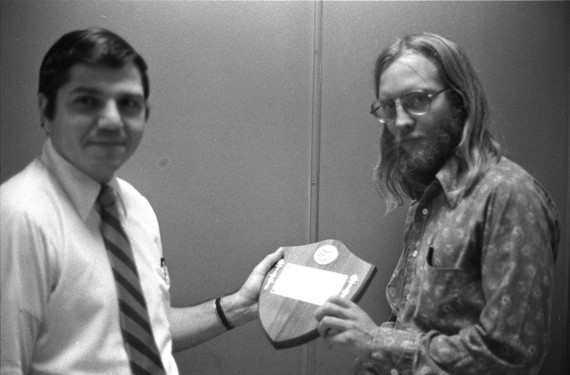

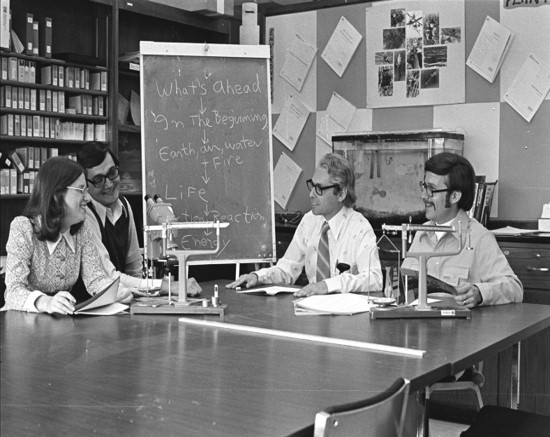
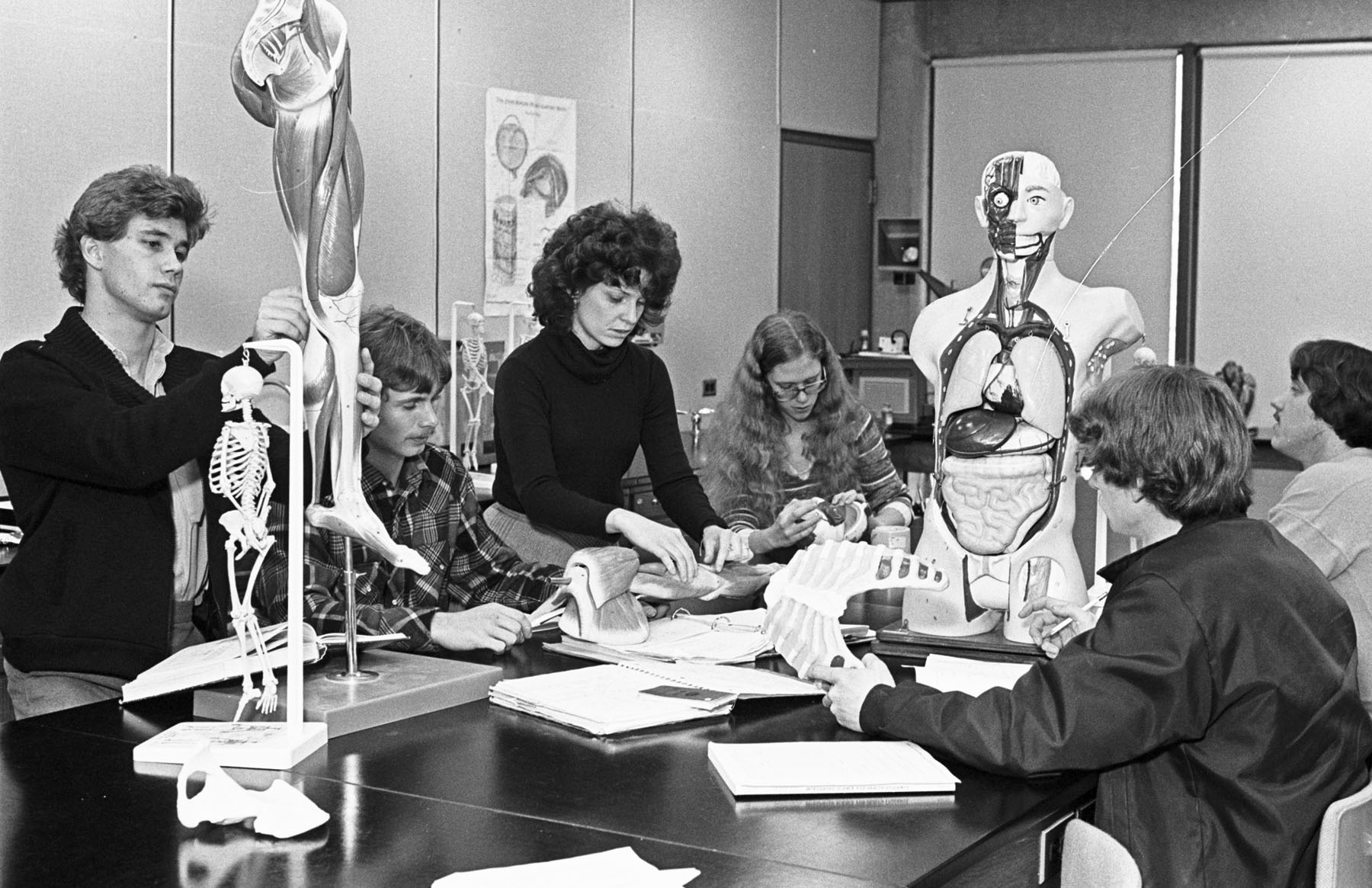
A quality assessment program was established in June whose purpose was “to document the existence of quality instruction through the use of student, peer, supervisor, and self-evaluations.”89 This program was an option within a faculty member’s MBO’s.∗∗ Ten full-time faculty participated in this project during the 1989-1990 academic year.90
In the library there was another idea to promote the library and raise funds for library acquisitions. The library’s Sharon Frey came up with the idea for a cookbook that would be a compilation of favorite recipes of the college’s Instructional Support Services staff. The book was titled Great Books, Great Cooks. It raised approximately $1,250. While the sum may be modest, the group spirit in participating in this project, and the support of the college made it worthwhile.
Fall credit enrollment was up at 4,198 students. The college was doing well. HCC’s Office of Research surveyed students to find out what were “the five most important factors in their decision to attend HCC.” The results were “location, tuition costs, educational programs, HCC’s placement record for transfer to four-year colleges, and the quality of the faculty.”91 The college was doing its job!
The decade had been a full one at the college. The first part saw a somewhat flat enrollment period and some distraction with the changes that were made to the Nursing building. However, there were significant accomplishments, outreach to the community and expansion. The college catalog was 196 pages with 71 pages of program descriptions and 62 pages of course descriptions. There were 61 full-time faculty, including three Associate Deans who held faculty rank, and of all those 24 had been with the college for ten years or more.
The decade was one of many changes. Outreach to the community was on many levels. Burrill was very active in any number of community organizations. The creation of an off campus operation at the Sterrett Building put the college even closer to Columbia’s downtown. The Grand Prix and the Festival of the Arts promoted the college’s name and reputation as a truly community-oriented place, and these two programs drew audiences from near and far; and the college’s academic programs grew and enrollment grew again. The college was doing fine.
Finally, the Galleria, Student Activities Center, and the Science and Technology Building were complete and a dedication ceremony was held on December 11, 1989, a festive way to end the year. The County Executive, Elizabeth Bobo, and Angela Beltram, a member of the County Council spoke. Dr. Edward Cochran, Chairman of the Board of Trustees, made the dedication, and the plaque was unveiled by Dr. Burrill, Dr. Cochran, and Professor John Bouman, President of the HCC Faculty Forum. The students were represented by Richard Hunt, President of the SGA, Todd Onderdonk, President of the Student Program Board, Glenda Kruger, Vice President of the HCC Alumni and Friends Association, and not least of guests was Mrs. Dorothy Baker, Class of 1977 and the widow of Alva Baker, who was one of the County Commissioners at the creation of the college.
Not a bad way to end the year and the decade.
To be continued . . .
Appendix A

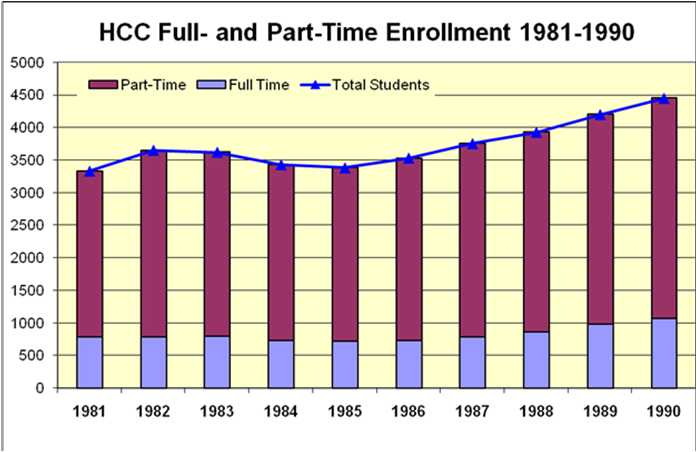
Appendix B
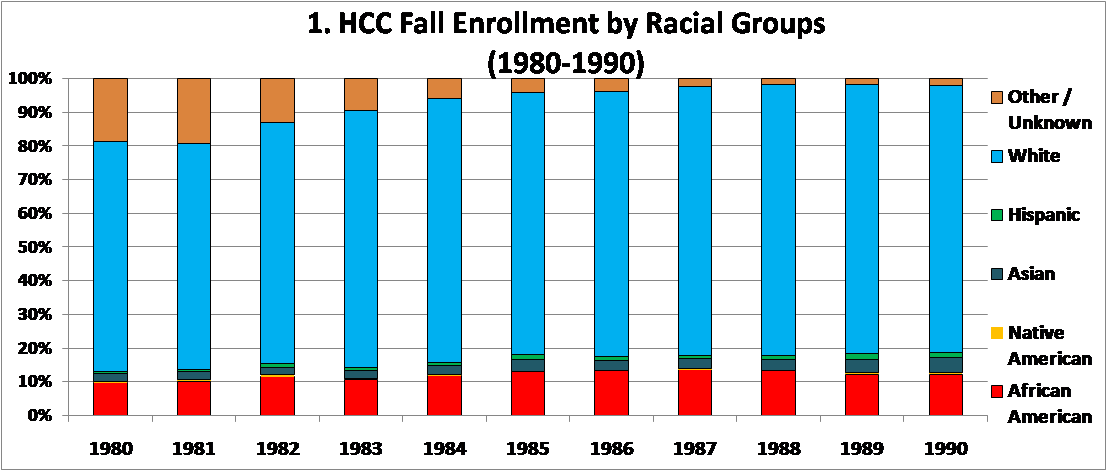
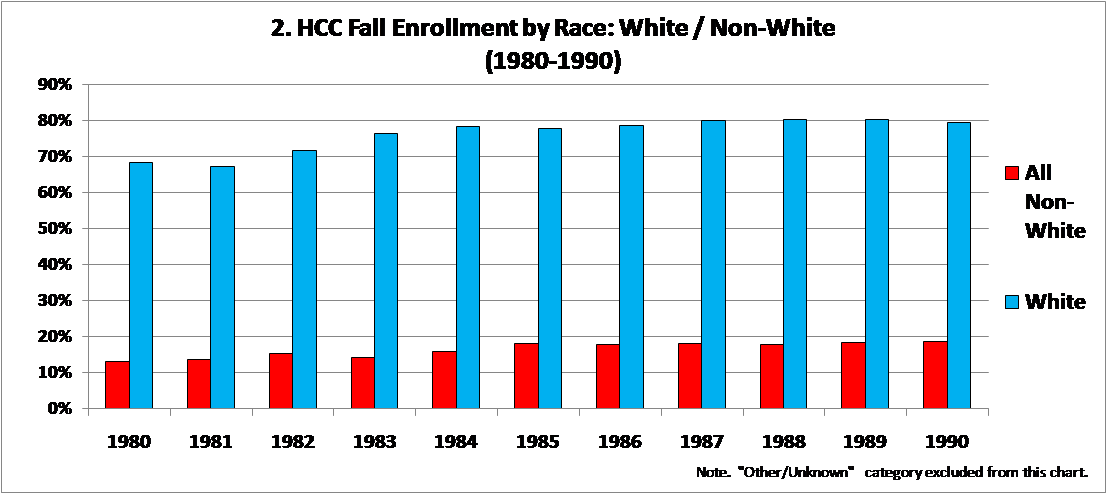
Appendix C
Nursing Building 1981
First Floor
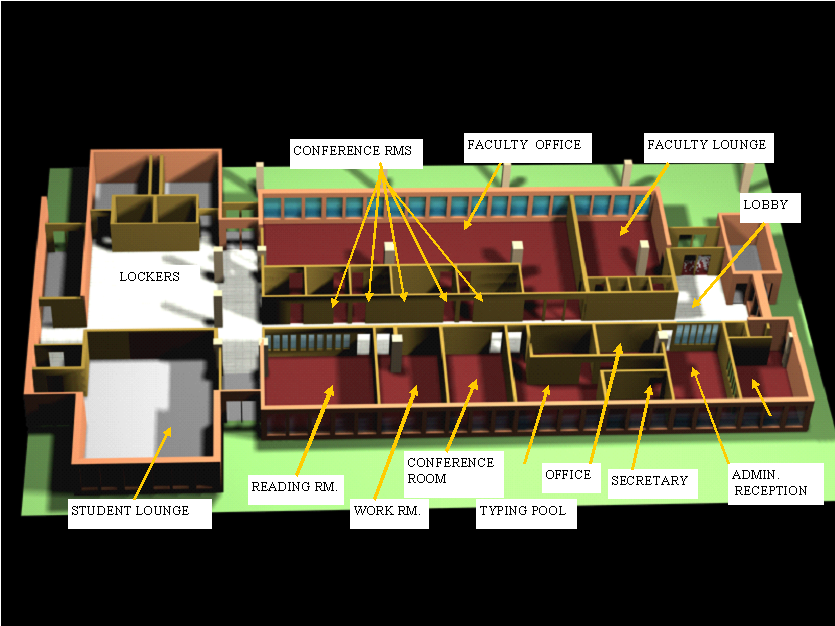
Nursing Building 1981
Second Floor
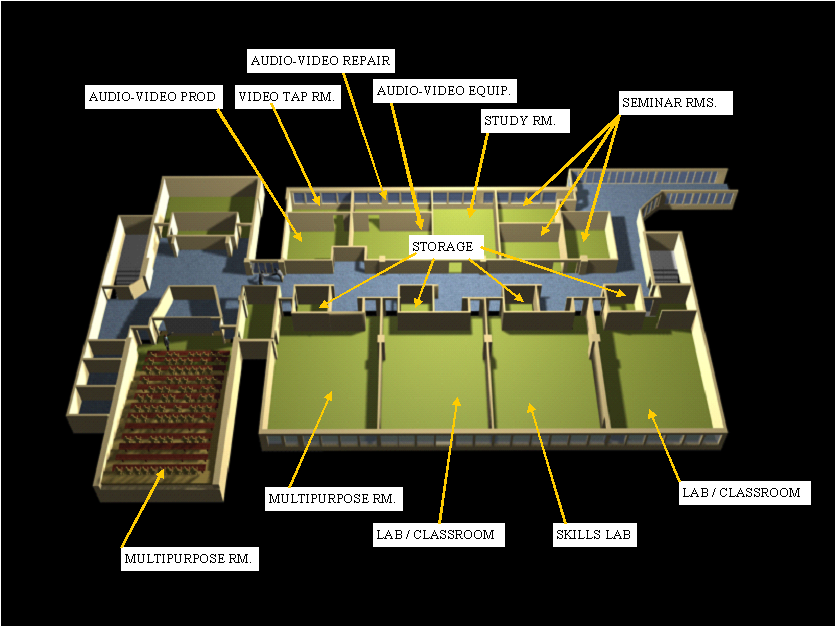
Appendix D
Nursing Building Restructured
First Floor
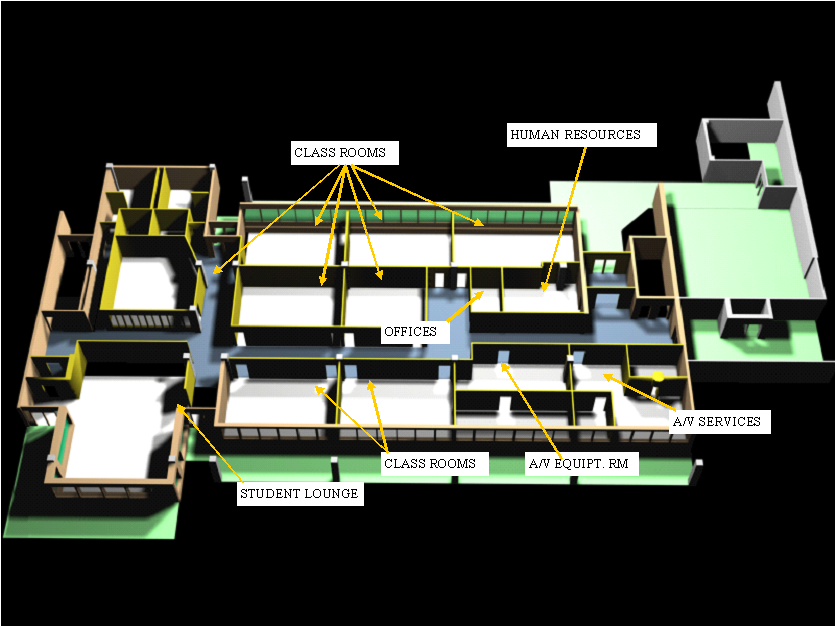
The major changes included moving the Audio Visual support function to the first floor to where the Director of Nursing’s office had been. It should be noted that the Continuing Education’s Director had been moved to that area for a short while, until ConEd moved to the Hickory Ridge Building; then AV took over that space. The Nursing reading room, which was a study room, was made into a classroom, the faculty lounge was eliminated, and the Human Resources office was moved into the building.
Nursing Building Restructured
Second Floor
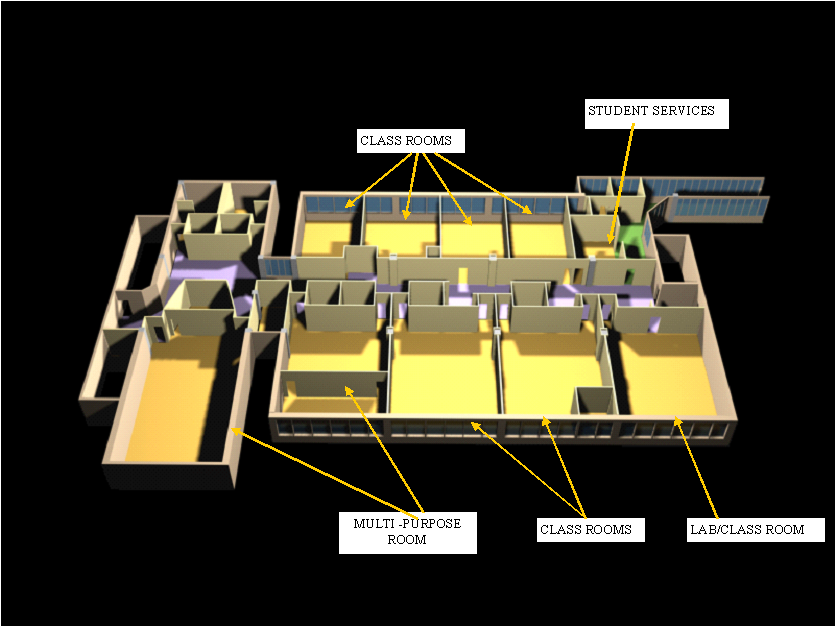
The changes on this floor were the elimination of the study room and seminar rooms in favor of classrooms and the Student Services function.
Appendix E
CHRONOLOGY OF HIGH SCHOOLS
IN HOWARD COUNTY
1951 Howard High School
1958 Glenelg
1965 Mt. Hebron
1966 Atholton
1971 Wilde Lake
1973 Oakland Mills
1976 Hammond
1977 Centennial
1985 Glen Elg Country School††
1994 River Hill
1996 Long Reach
2002 Reservoir
2005 Marriotts Ridge
Appendix F
HOWARD COUNTY EXECUTIVES
Omar Jones 1969-1974
Edward Cochran 1974-1978
Hugh Nichols 1978-1986
William Eakles 1986
Elizabeth Bobo 1986-1990
Charles Ecker 1990-1998
James Robey 1998-2006
Kenneth Ulman 2006-
Appendix G
1987 Plan for Cultural Arts Center
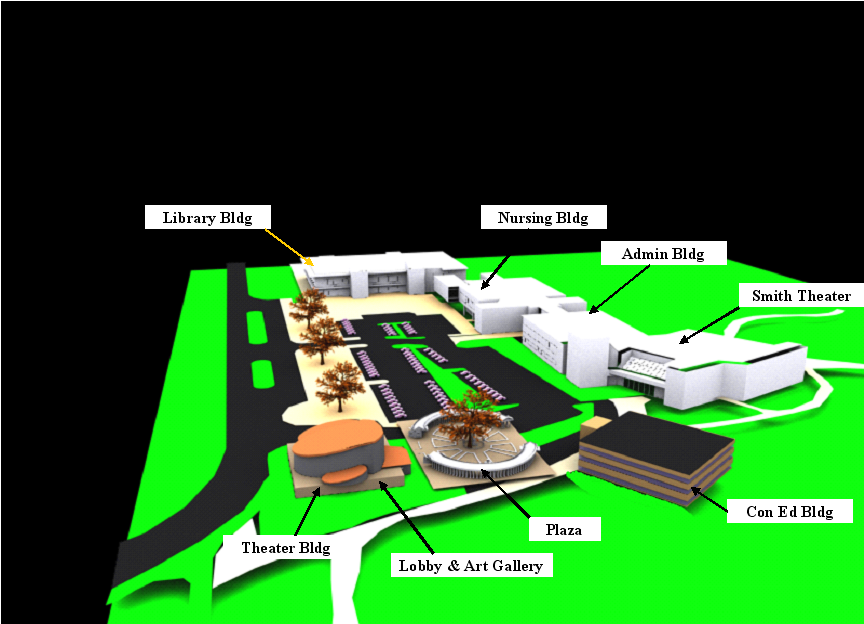
Burrill’s vision for the college to become the cultural arts center of the county is shown by a pen sketch made by Burrill that was converted to this schematic diagram by Professor David Hinton. The idea was to have a theatre that could seat between 750 – 1,000 people and an art gallery as part of the building. A Continuing Education Building would also be constructed on campus. ConEd would add cultural credit-free courses and various cultural/educational experiences, and there would be a plaza between the two buildings. The proximity of the Smith Theatre would round out the entire complex.92
Endnotes
* Schematic images of the original spaces in the Nursing building and of the alterations to it can be found in Appendices C and D (with thanks to Professor David Hinton).
†As noted above, Burrill’s vision for a cultural arts center on campus is shown in APPENDIX G.
‡ During its planning and construction this building was referred to as the Tech Arts Building.
§ This facility would later be called the Hickory Ridge Building.
** MBO was a term used prior to the current acronym MAPS.
†† Glen Elg Country School is a non-sectarian private school that began in 1954 with primary grades. In 1985 it added grades 9 through 12 and had its first high school graduating class in 1989.
[1] Columbia Flier, Volume 12/Number 16/October 9, 1980
[2] Ibid. p. 23.
[3]Ibid., p. 2.
[4]Board of Trustees Minutes, November 19, 1980.
[5]Columbia: A Celebration. Columbia, Md., Perry Publishing, 1995, p.114.
[6]Mitchell, Joseph R. and David L. Stebenne. New City Upon a Hill; a History of Columbia, Maryland. Charleston,
S.C.: The History Press, 2007, p. 129.
[7]Mini-Profile of HCC Enrollment, Fall, 1981
[8]Board of Trustees Minutes, September 30, 1981.
[9]Board of Trustees Minutes, October 28, 1981.
[10]Marinich conversation with Dr. Charles B. Leonard, Jr., October 2, 2008.
[11]“College Catalog: Directory of Educational Opportunities,” Columbia Flier, Dec. 29-30, 1982, p.6.
[12]Howard County Times article, “Opening up HCC?” February 11, 1982.
[13] Howard Sun article “Council correct to obey executive on HCC budget, judge rules,” April 8, 1982.
[14] The Howard County News, Thursday, May 6, 1982, page 4. The title of Bobo’s article is “H.C.C. a real asset to the county.”
[15] Board of Trustees Minutes, September 30, 1981.
[16] Columbia Business Journal, April 27, 1982.
[17]Mini-Profile of HCC Enrollment, Spring, 1982.
[18]Howard Sun, February 25, 1982.
[19]Howard Sun, Wed. Thurs., May 19-20, 1982.
[20]Marinich interview with Dr. Dwight Burrill, July 3, 2008.
[21]Howard Sun, February 11, 1982.
[22]Howard County Times, October 7, 1982.
[23]Martha Matlick letter to Health and Human Services, December 17, 1981.
[24]Undated letter from U.S. Department of Health and Human Services to Dr. Dwight A. Burrill. While the letter was not dated by HHS, the Howard Community College date stamp shows 21 June.
[25]Howard County Times, October 7, 1982.
[26]Marinich interview with Dr. Dwight Burrill, July 3, 2008
[27]Columbia Flier, January 28, 1982.
[28]Howard Sun, April 4, 1982.
[29]Tri-County Free Press, November 1, 1982
[30]Board of Trustees Minutes, November 17, 1982.
[31]Howard Community College Board of Trustees Minutes, February 23, 1983.
[32]Howard Magazine, June-September 2008, p. 24.
[33] Howard Community College Board of Trustees Minutes, March 23, 1983.
[34] C.B. Lovell and Sue Frankel. End of Year Report: Developmental Program in Communication, June 1, 1983.
[35] Idem.
[36] Marinich interview with Dr. Dwight Burrill, July 3, 2008.
[37] Marinich interview with Valerie Lash, May 13, 2008.
[38] Burrill memo to All Faculty and Staff re: Campus Communication, November 15, 1983.
[39] Idem.
[40] www.sportsecyclopedia.com/nfl/balticolts.html
[41] Mitchell and Stebenne, Op. cit., pp.127-128.
[42] Howard County Times, May 17, 1984.
[43] L. Madaras interview with Helen Mitchell, June 15, 2004, and Howard Community College Board of Trustees Minutes, February 15, 1984, p.2.
[44] Howard Community College Board of Trustees Minutes, February 15, 1984, p.2.
[45] Howard Sun, May 16, 1984.
[46] Howard Community College Board of Trustees Minutes, September 26, 1984, p.2.
[47] Lovell, C.B. A Proposal for the Establishment of A Writing Center, August 1, 1984, p.1.
[48] Howard County Times, “Merit pay meeting,” September 13, 1984.
[49] The program for this conference has not been located yet. This information is from Marinich’s recollection.
[50] James Rouse, “Potentials for a College in Columbia”, Columbia Archives, undated.
[51] L. Madaras interview with Dr. Edward Cochran, June 4, 2003.
[52] Glenelg History. Glenelg.org/admissions/history.asp.
[53] Howard Community College 1970-1971Catalog, p. 16.
[54] This phrase, “student controlled” reasons was not in the catalog. Rather, it was explained to faculty at the time.
[55] Article, “Earn a B.A. degree at HCC”, Columbia Flier, August 15, 1985.
[56] Department of Health & Human Services letter to M. Matlick, September 16, 1986.
[57] S. Baum memo to V. Marinich, June 7, 2007.
[58] Faculty Forum Executive Council Meeting Minutes of November 8 [1985].
[59] Faculty Forum Executive Council Minutes for the November 22, 1985 Meeting.
[60] Faculty Forum Executive Council Minutes, January 30, 1986.
[61] Faculty Forum Meeting, Unofficial Minutes, February 7, 1986, page 1.
[62] Ibid., page 2.
[63] Faculty Forum Executive Council Minutes for March 21, 1986.
[64] Dwight Burrill memo to College Community Re: Administrative Reorganization, May 1, 1986.
[65] V. Marinich interview with Barbara Greenfeld, February 16, 2009.
[66] Birnbaum, Robert. Management Fads in Higher Education. San Francisco, Calif.: Jossey Bass Co., pp. 94-95.
[67] President’s Cabinet Notes; Cabinet Meeting, December 13, 1983.
[68] “HCC president announces second try for cultural arts complex on campus,” Columbia Flier, November 19, 1987.
[69] Idem.
[70] V. Marinich interview with Dr. Dwight Burrill, May 18, 2009.
[71] Howard County Times, August 13, 1987.
[72] Howard Community College Board of Trustees Minutes, September 30, 1987, p.3.
[73] Howard Community College Board of Trustees Minutes, October 21, 1987, p.3.
[74] Howard Community College Board of Trustees Minutes, September 28, 1988, p.1. There does not appear to be any announcement of this change other than to have it identified in the list of members attending the Board meeting.
[75] V. Marinich interview with Lynn Coleman, March 24, 2009.
[76] Baltimore Sun, February 2, 1988.
[77] HCC Educational Foundation Minutes, June 21, 1988, p.2.
[78] Columbia: A Celebration. Columbia, Md., Perry Publishing, 1995, p.116.
[79] M. Mattey e-mail to V. Marinich, May 4, 2009.
[80] Howard Community College Educational Foundation Minutes, December 14, 1988.
[81] Cornelison, Alice. History of Blacks in Howard County, Maryland. Howard County NAACP, 1986.
[82] “Howard Co. leaders developing festival for the arts in Columbia, “ Baltimore Sun, March 27, 1988, p.12E.
[83] Idem.
[84] Marinich interview with Dr. Dwight Burrill, July 3, 2008.
[85] “Writer to tell war stories of ‘Bloods,’” Columbia Flier, March 24, 1988.
[86] Howard County Times, November 27, 1988.
[87] Howard Community College Educational Foundation Minutes, February 14, 1989, p.2.
[88] Howard Community College Educational Foundation Minutes, April 11, 1989, p.2.
[89] Quality Assessment Committee memo to Full-time Faculty, June 9, 1989.
[90] Peter C. Ku Memo to Full-time Faculty, November 29, 1989.
[91] Howard Community College Campus News, October, 1989, p.1.
[92] V. Marinich conversation with Dr. Dwight Burrill, May 18, 2009.
